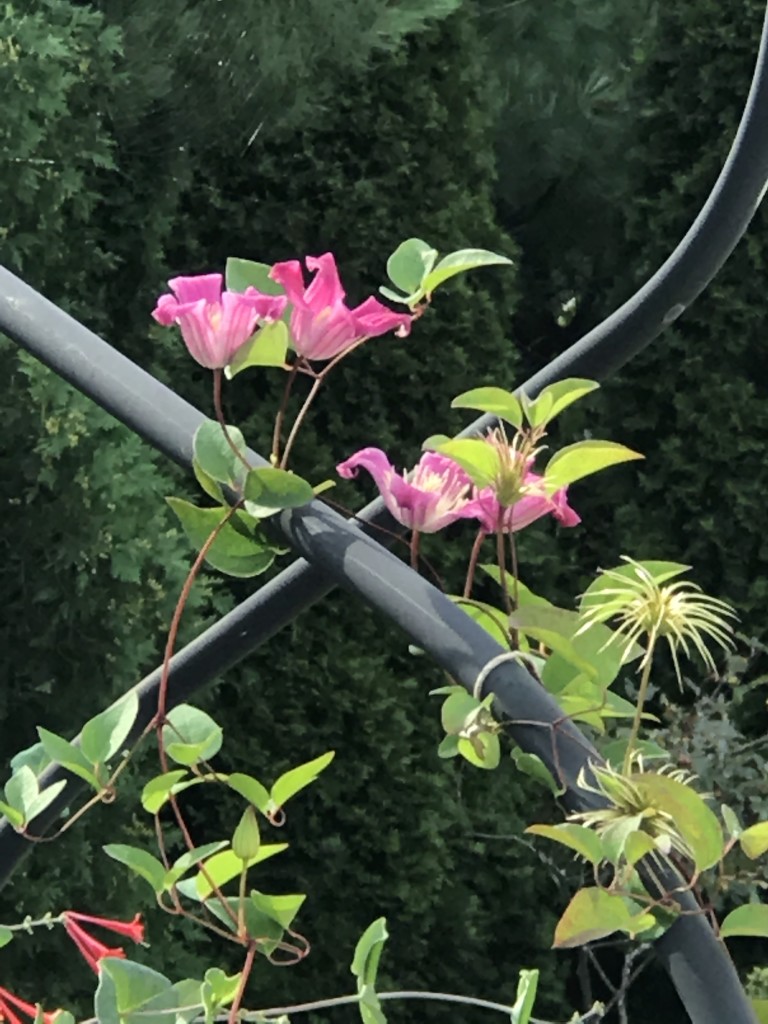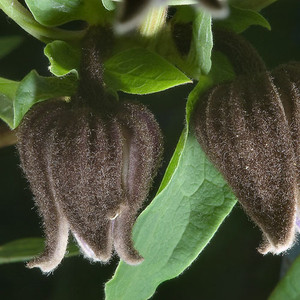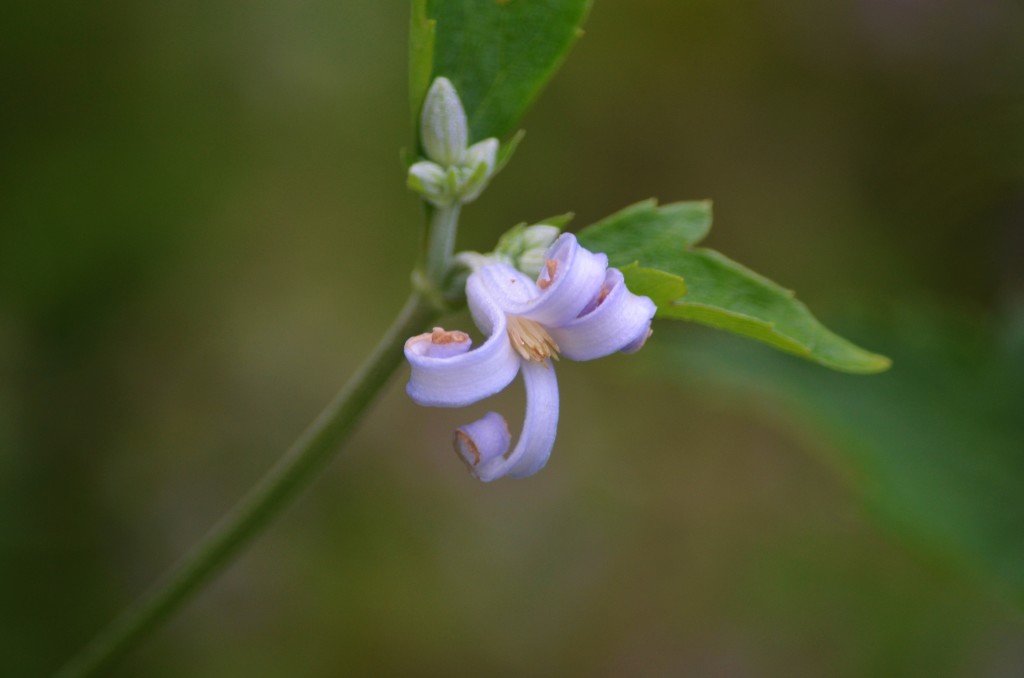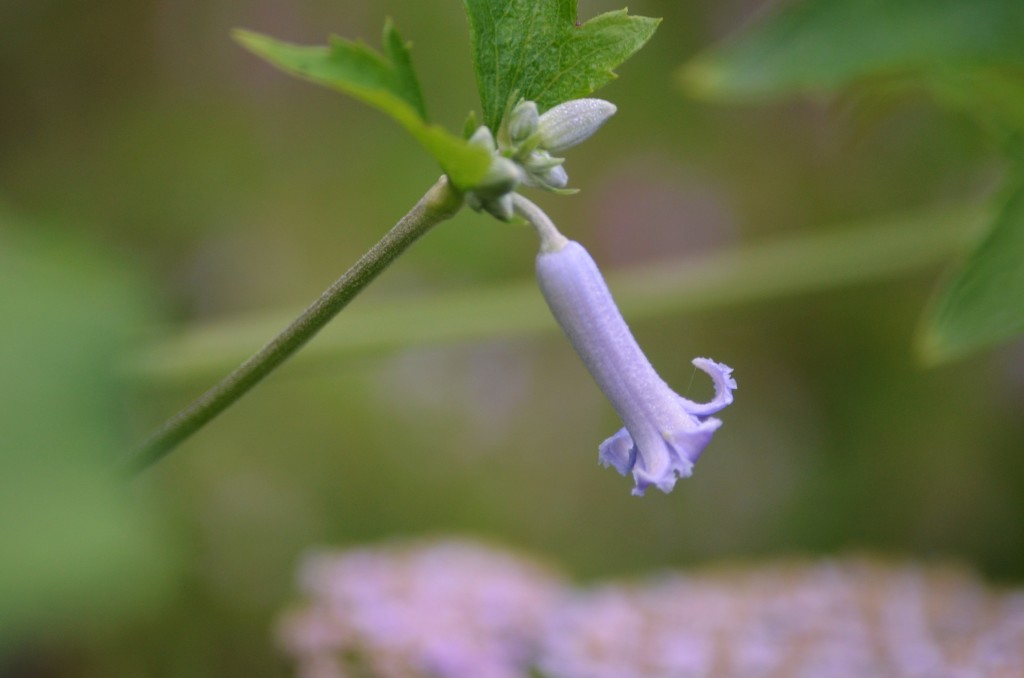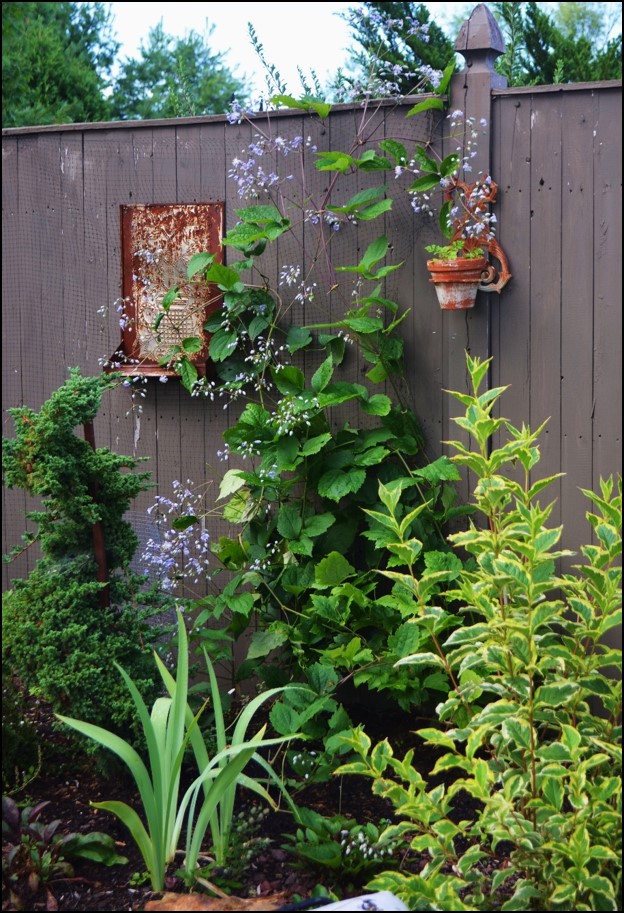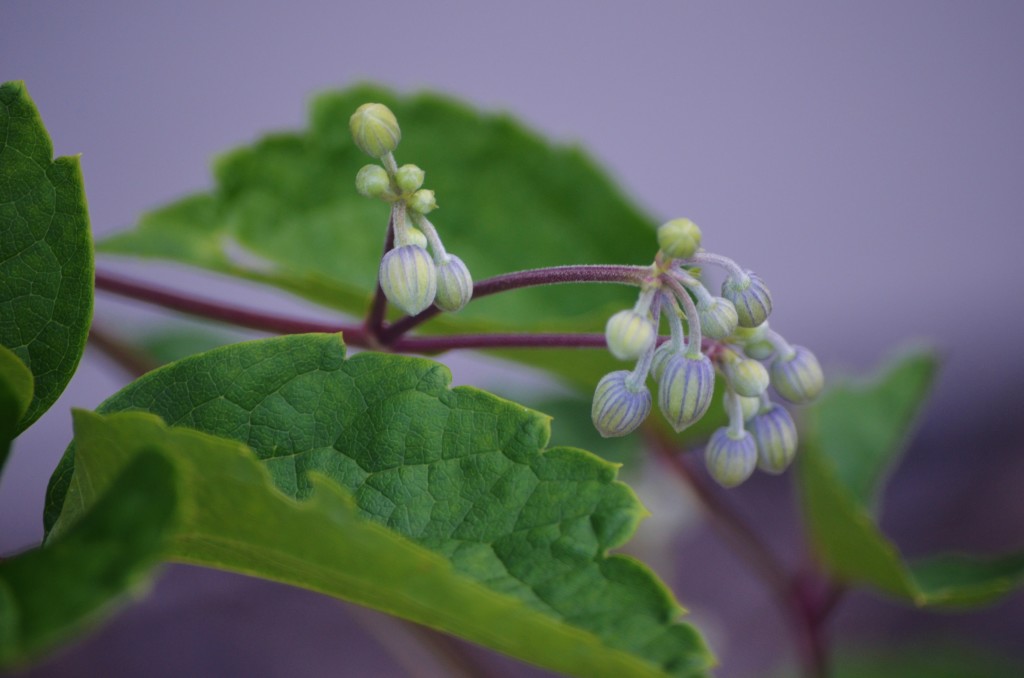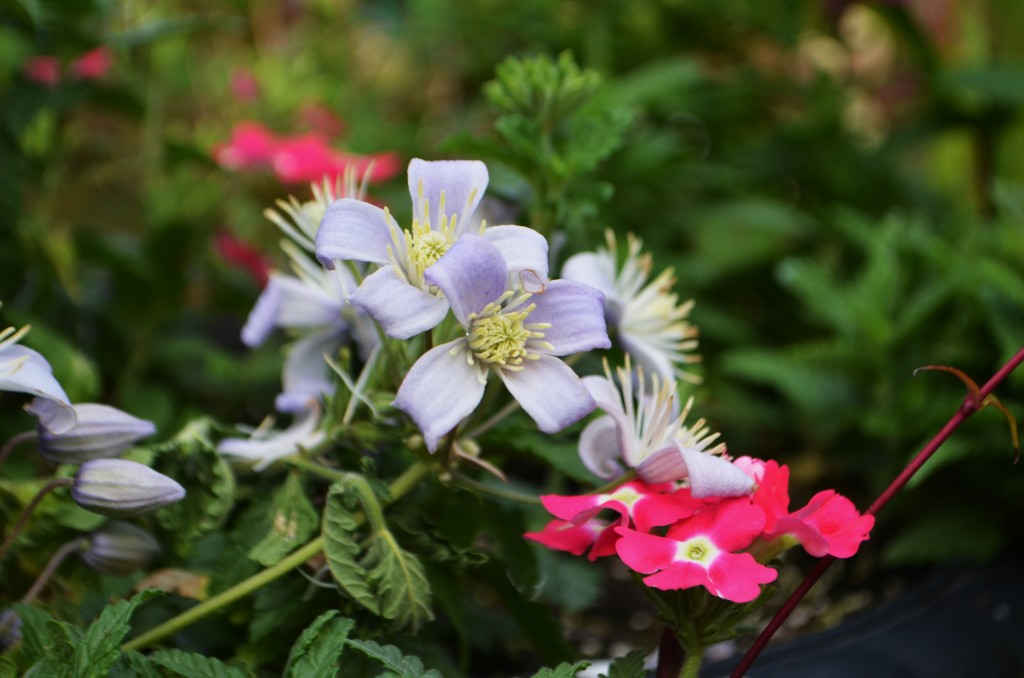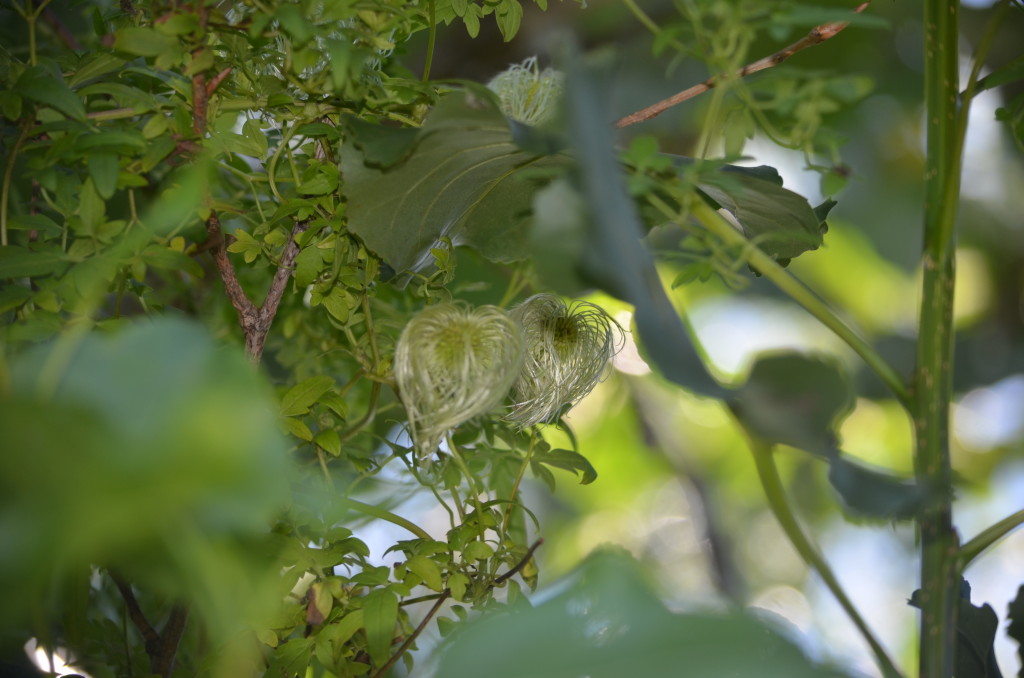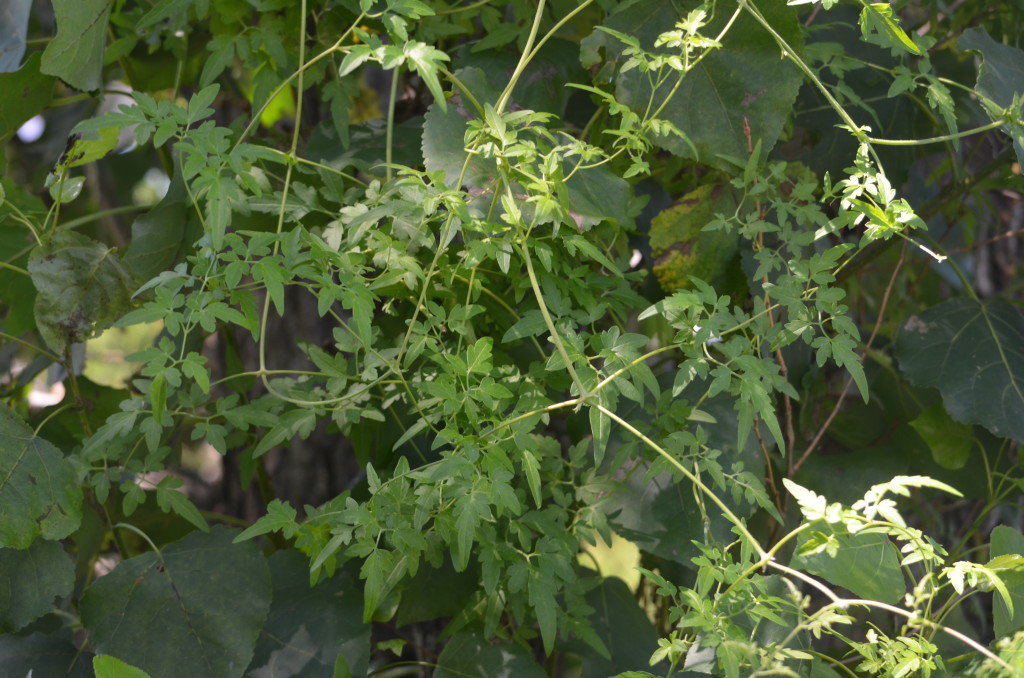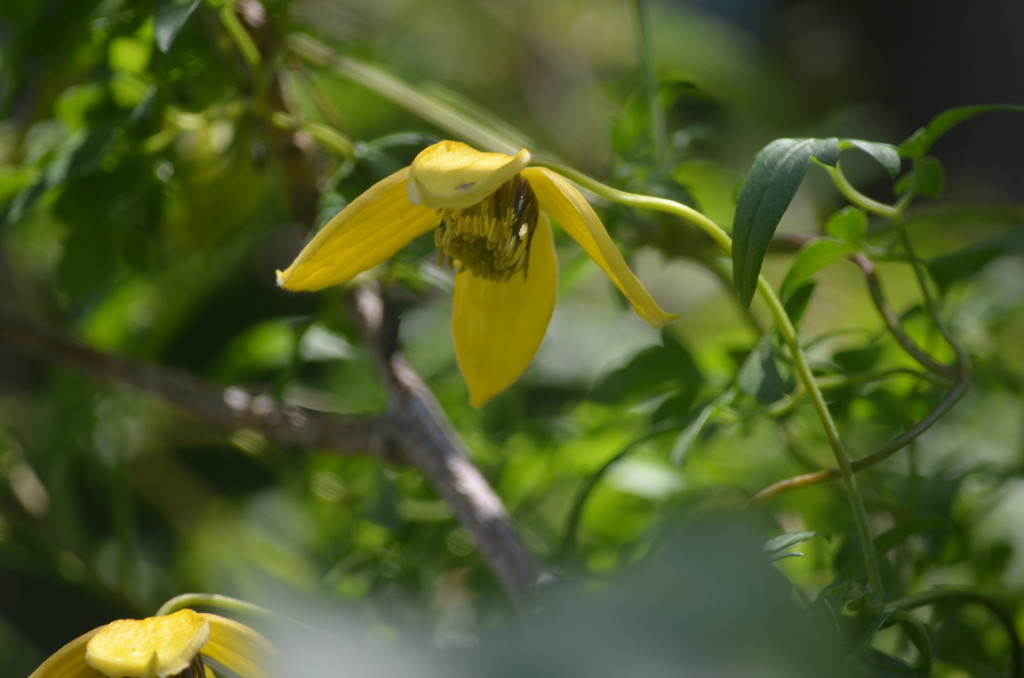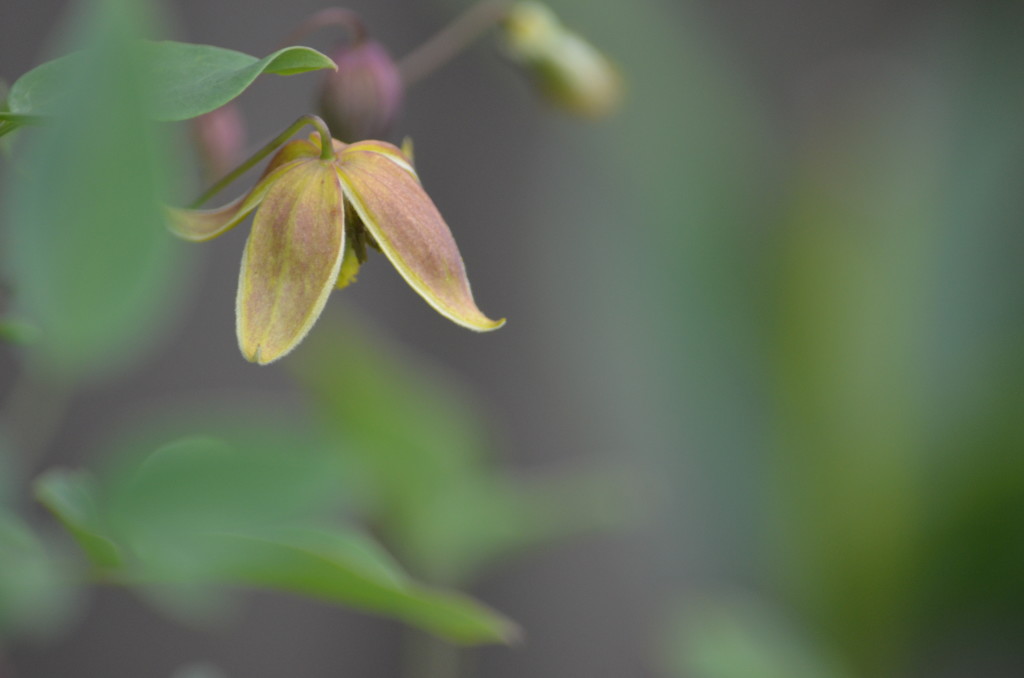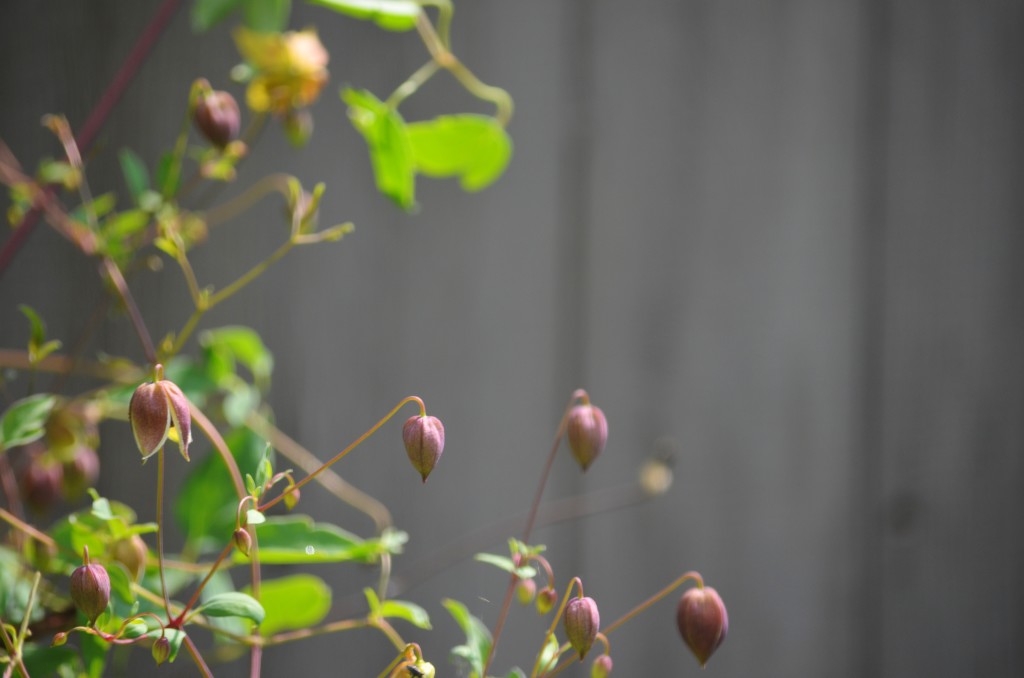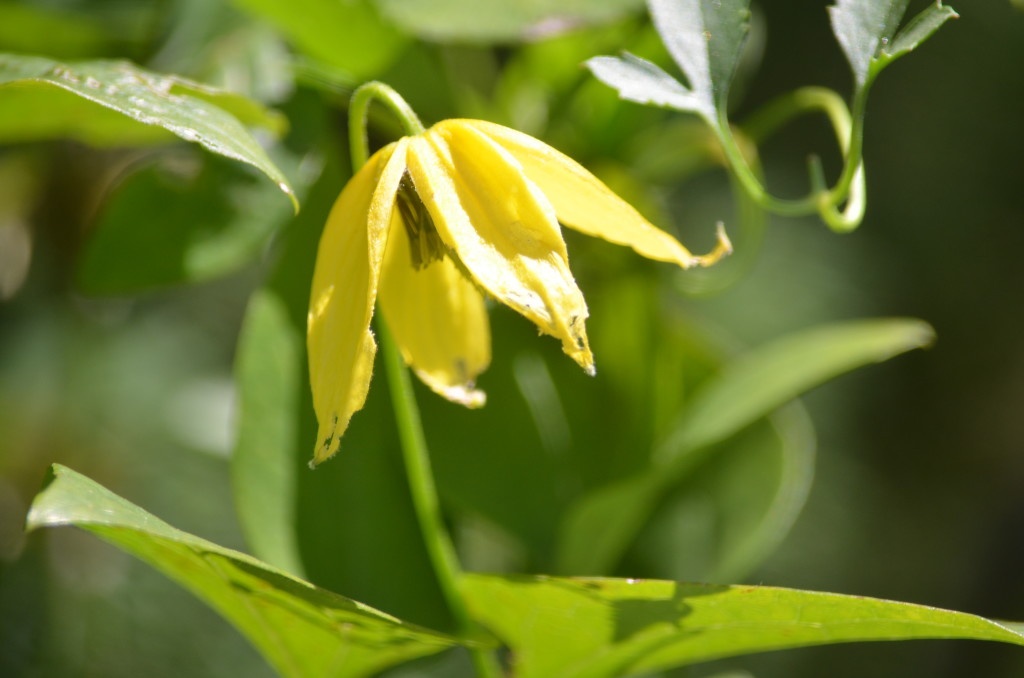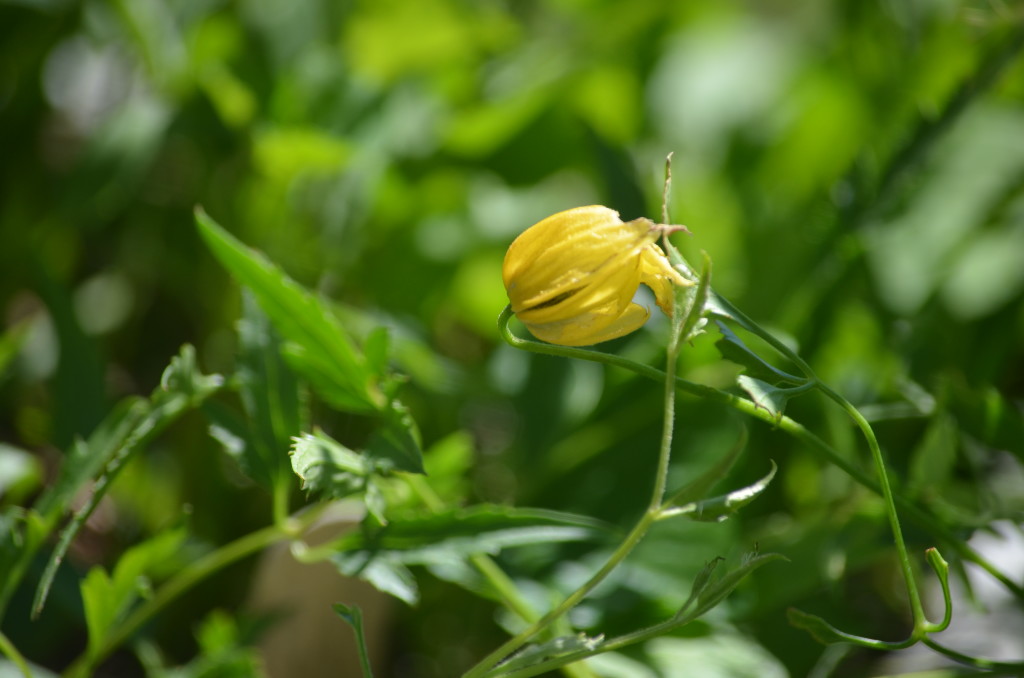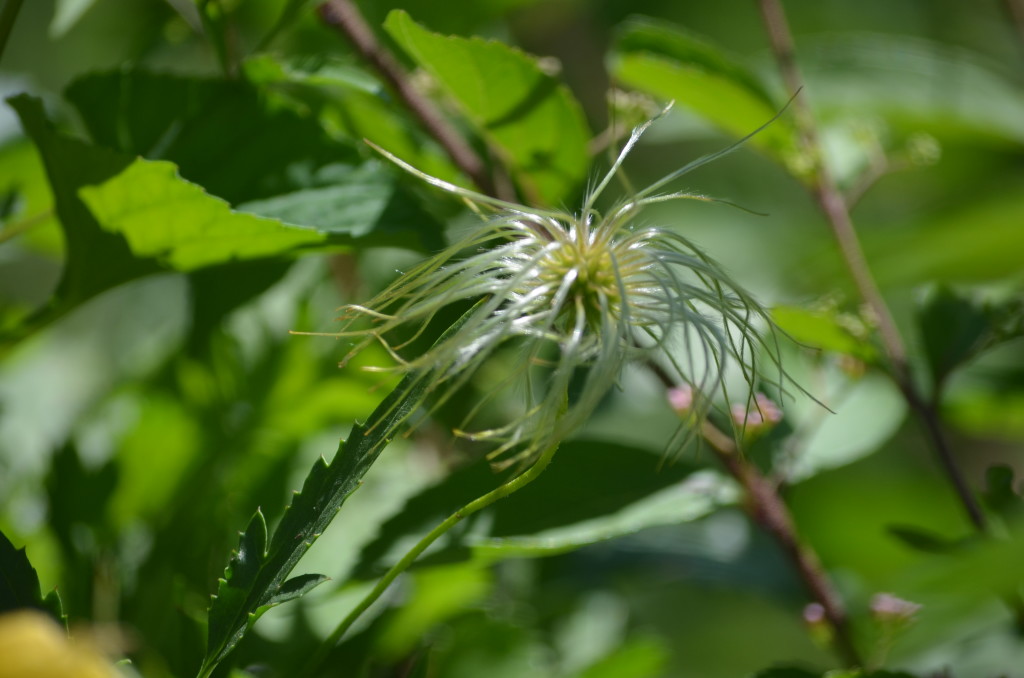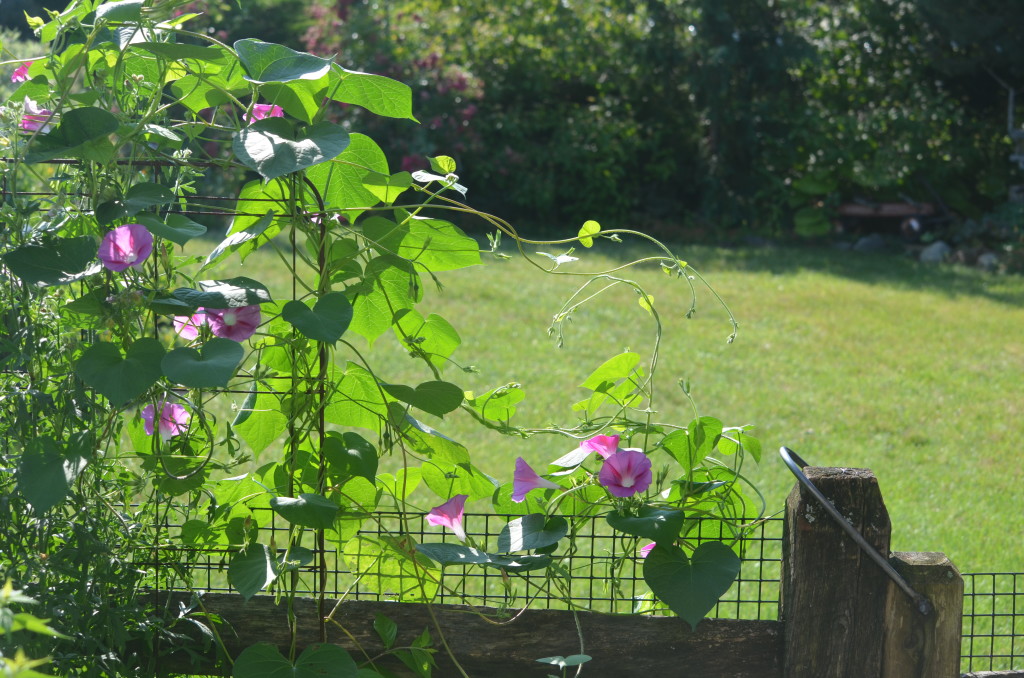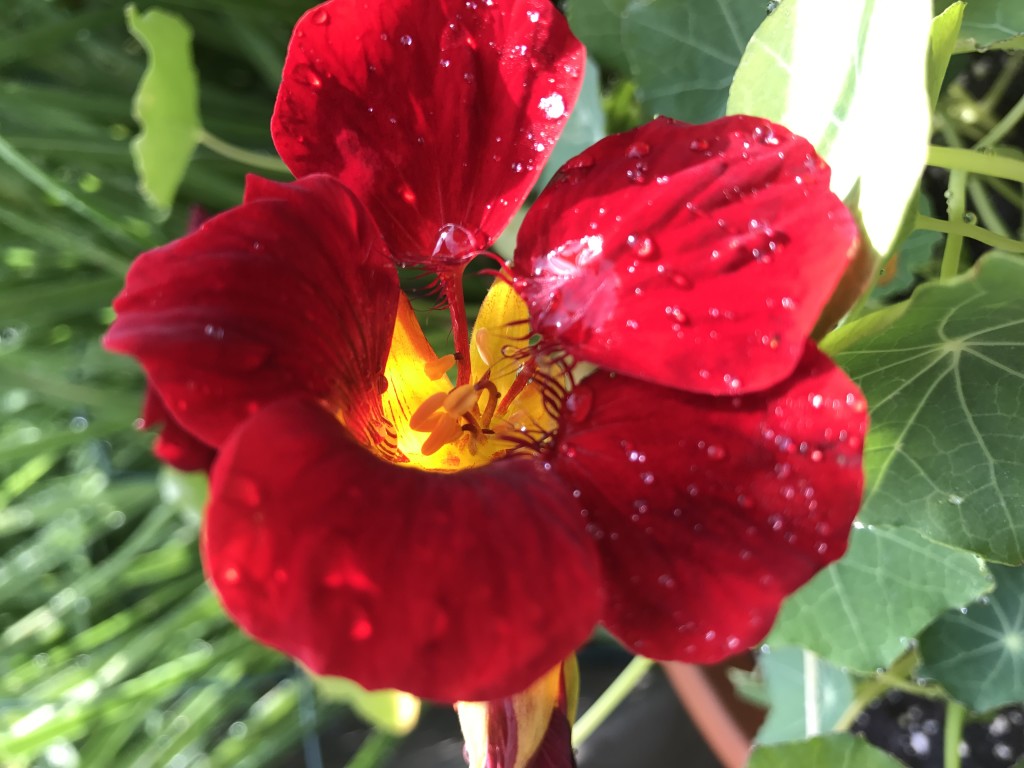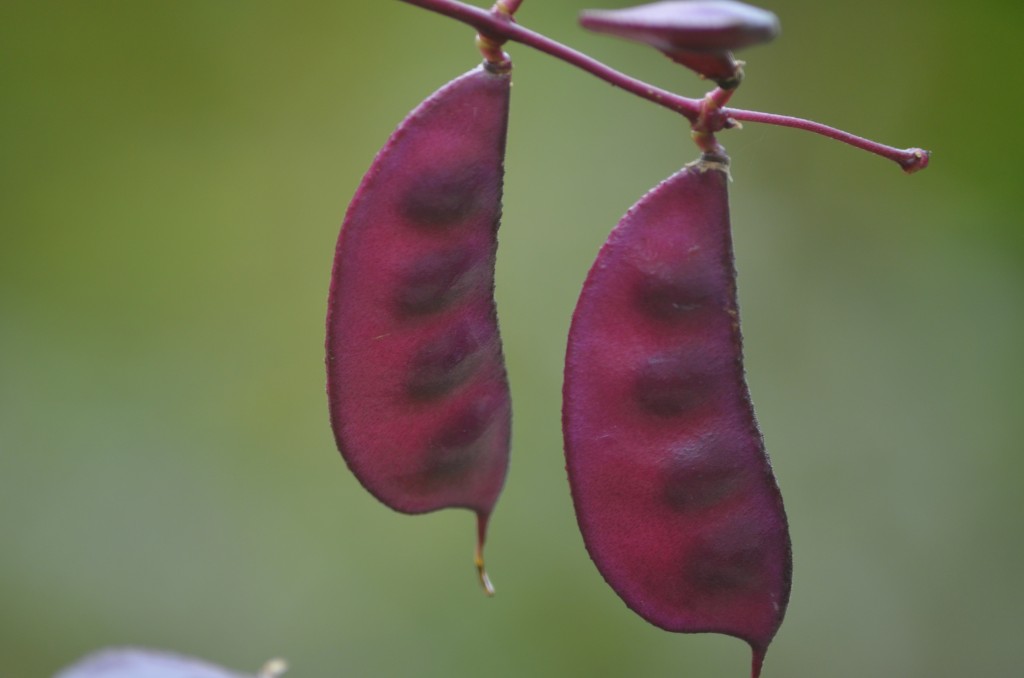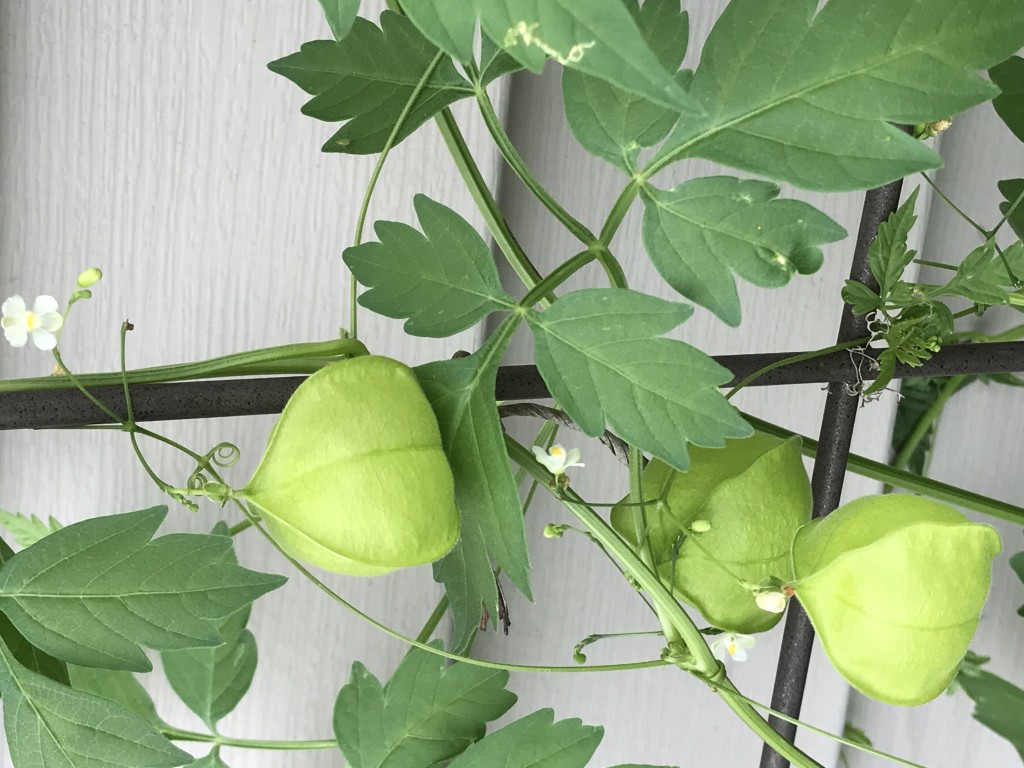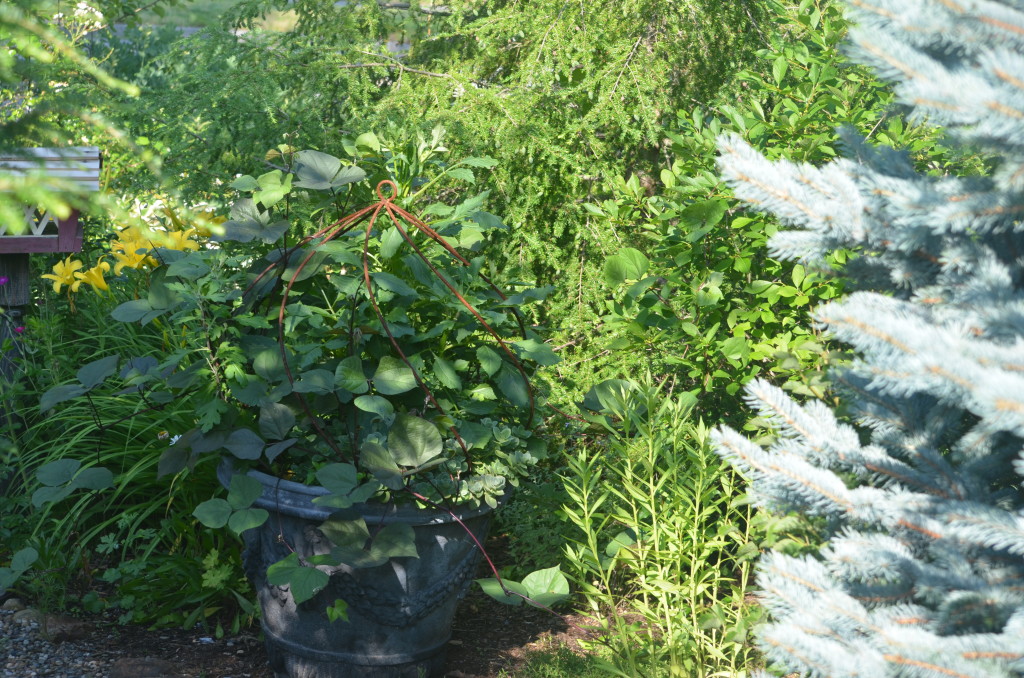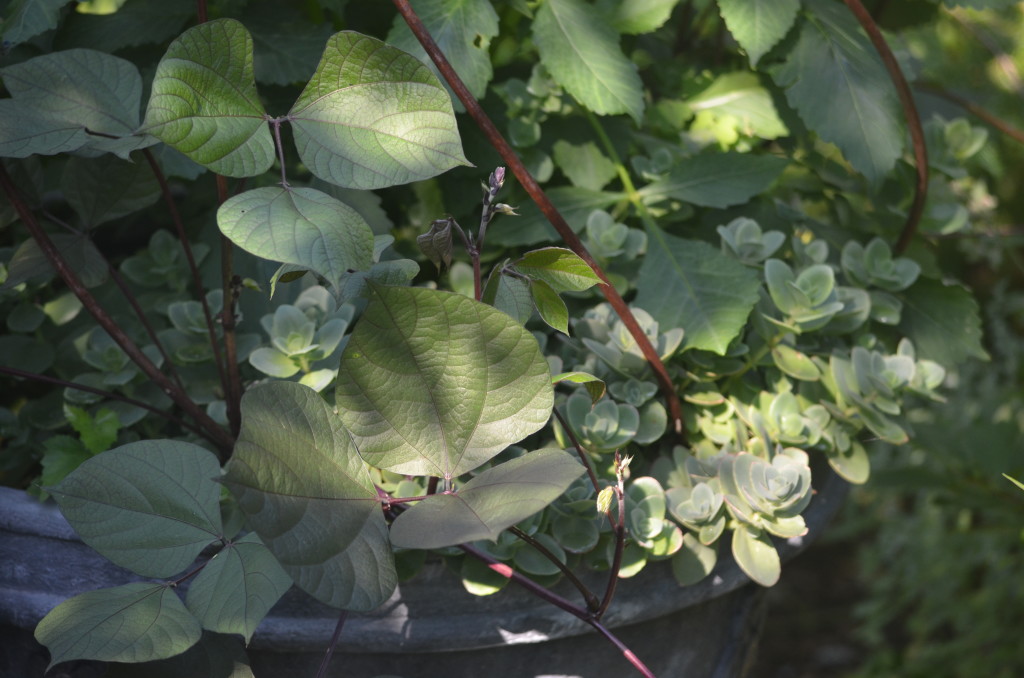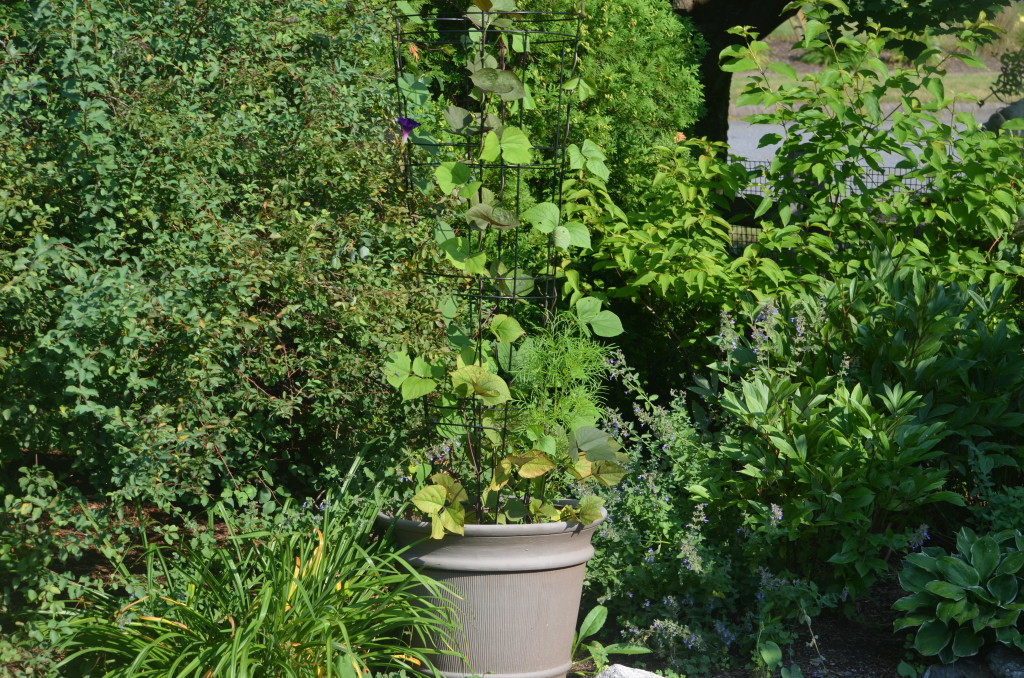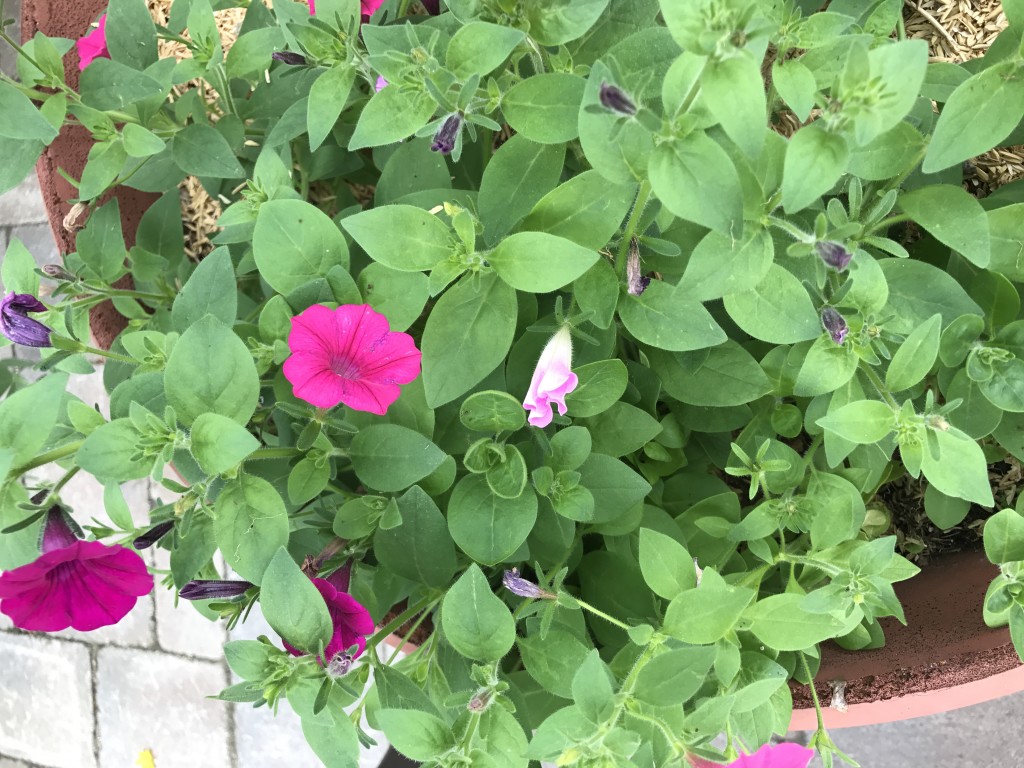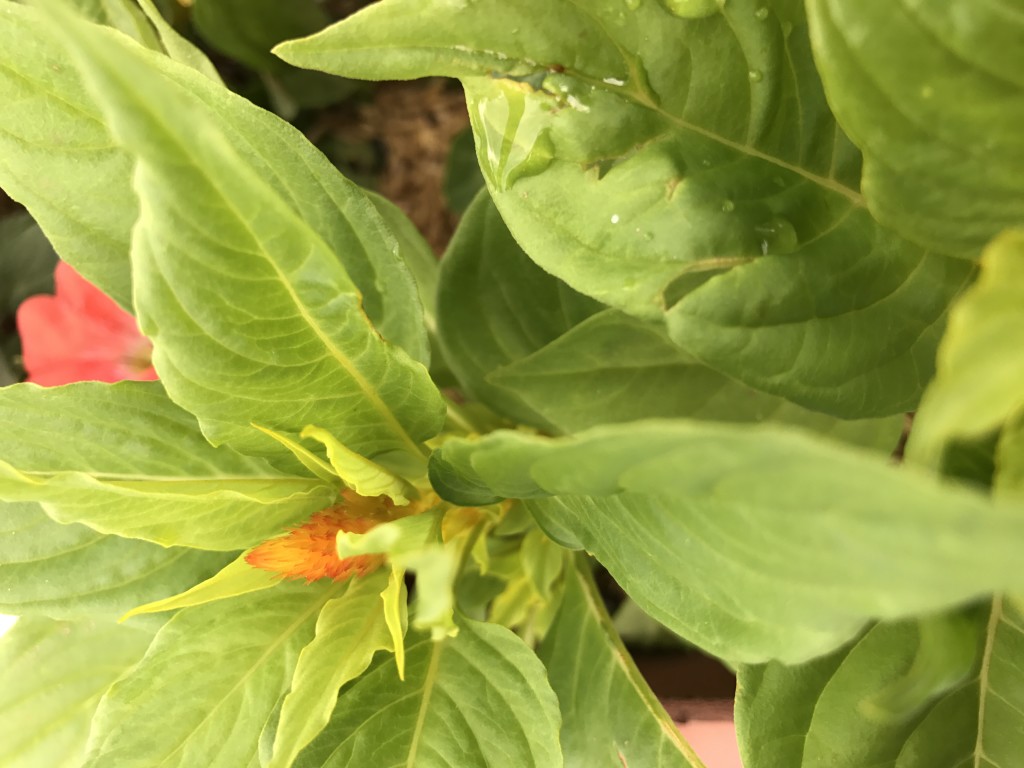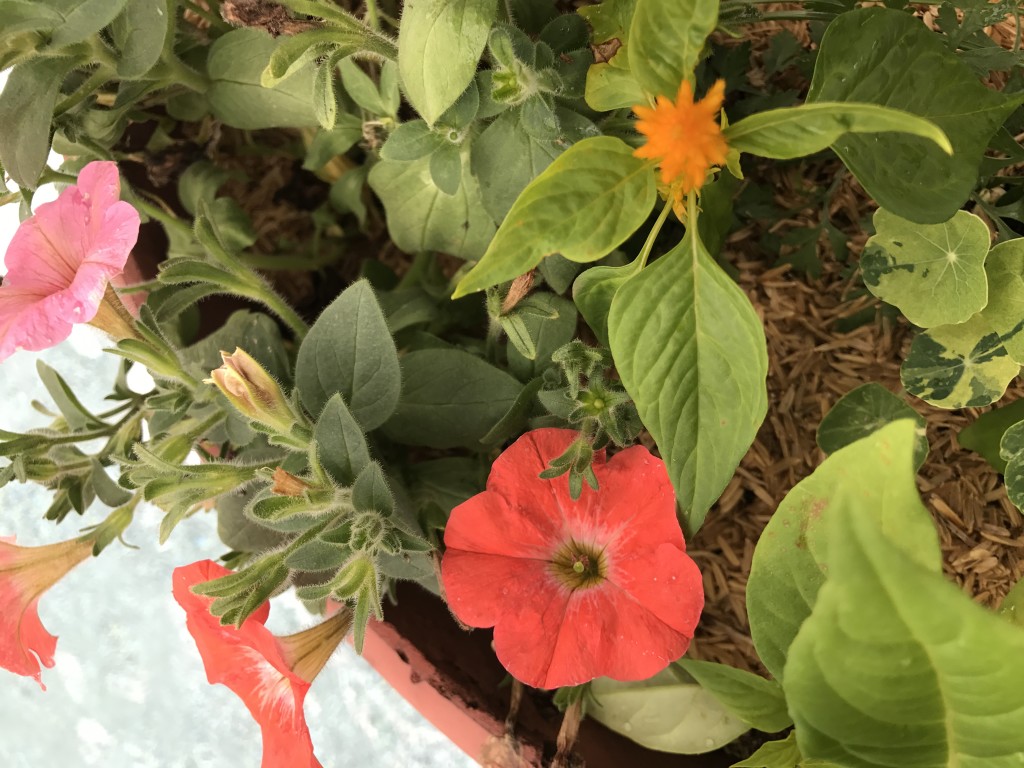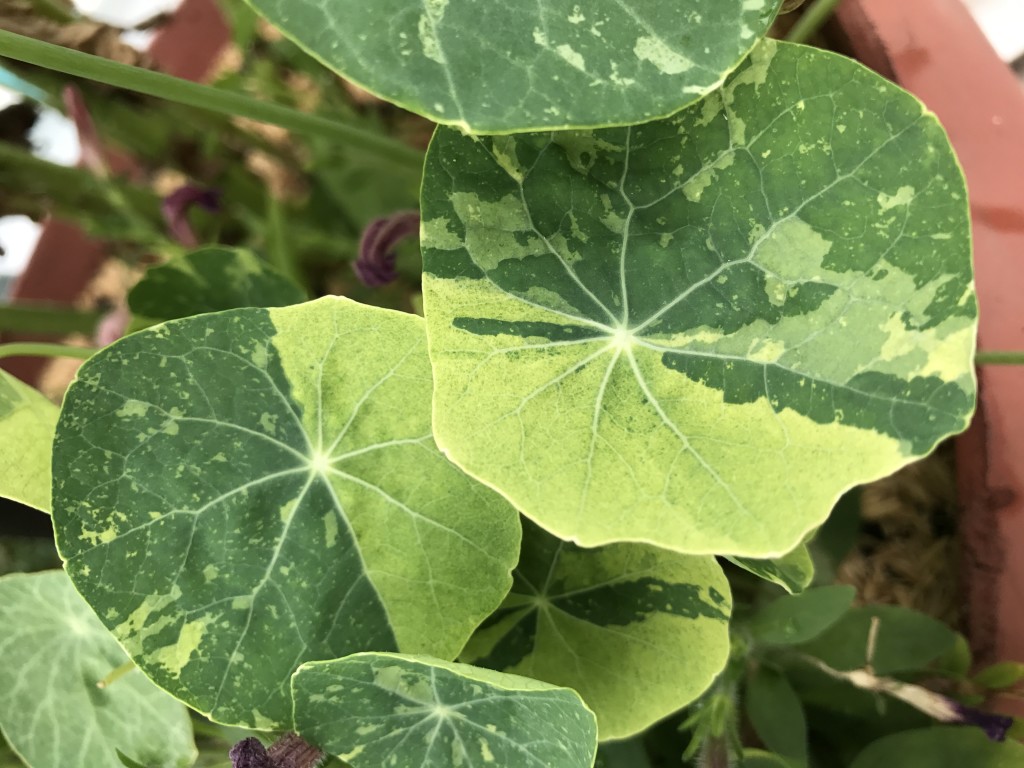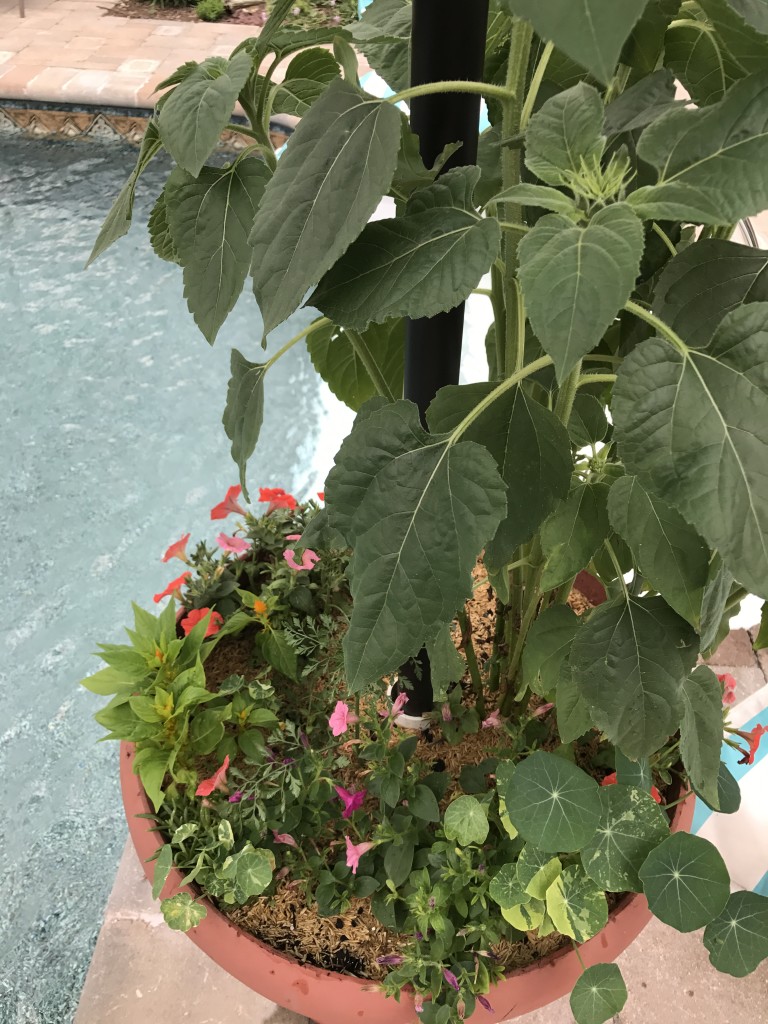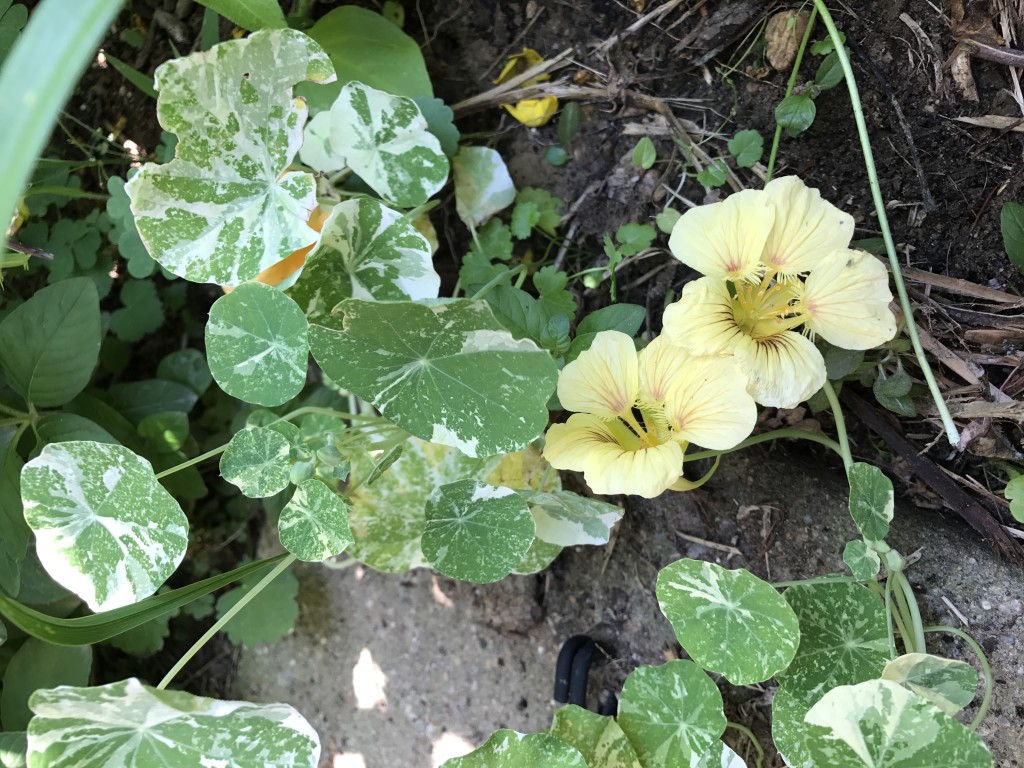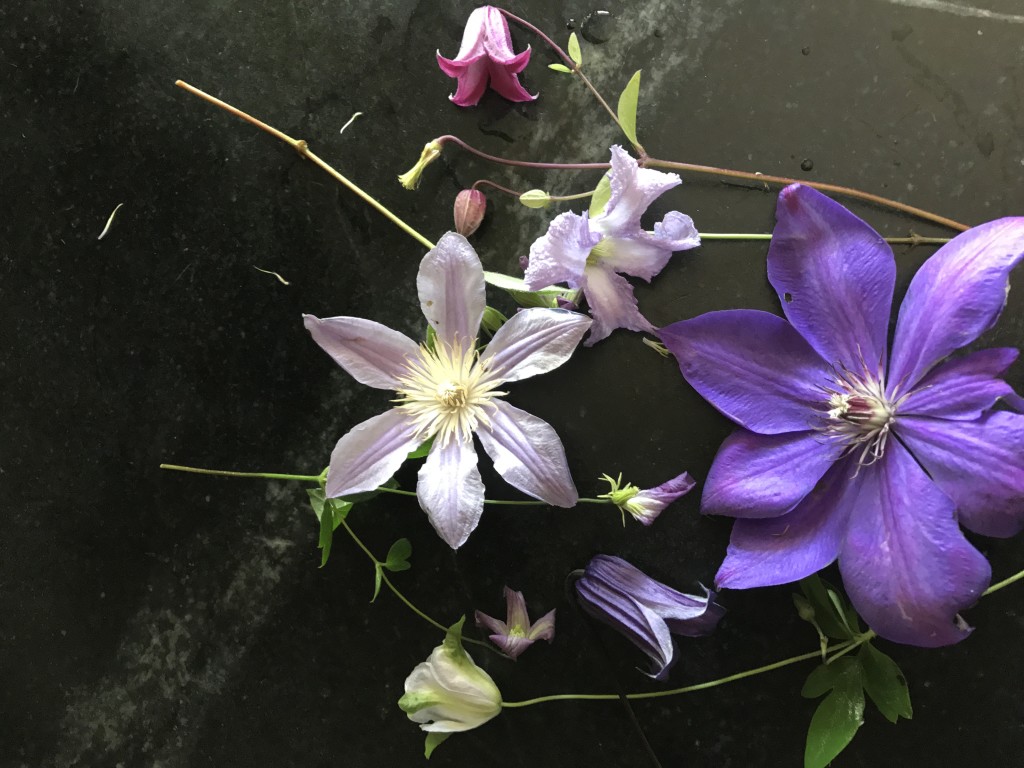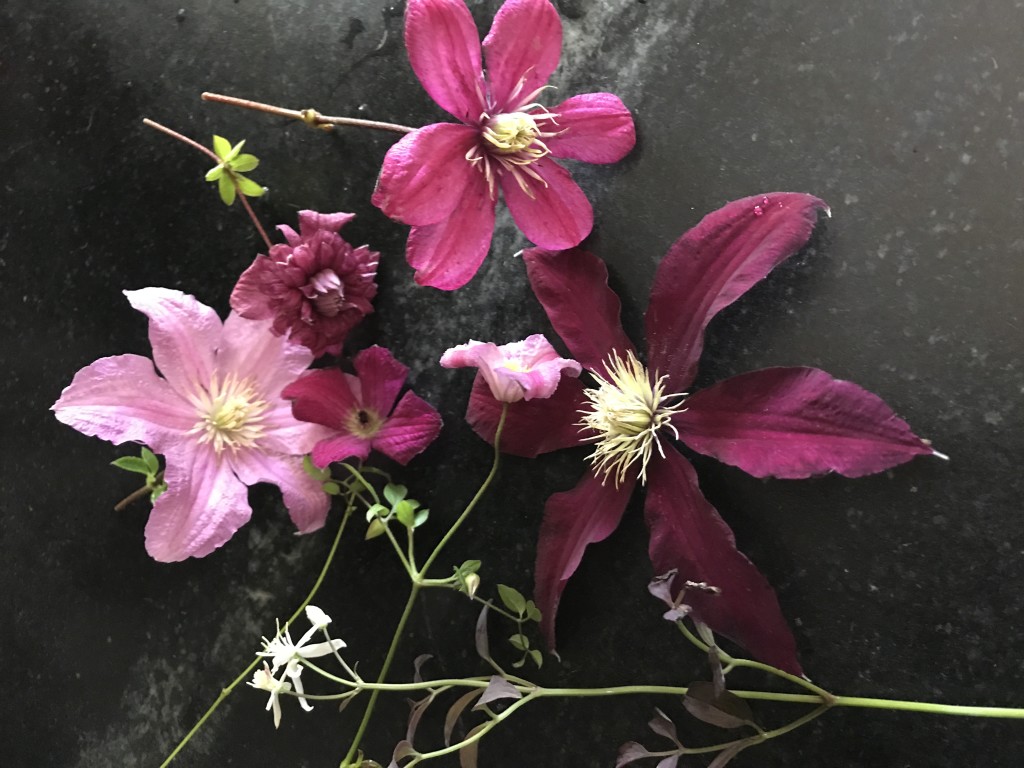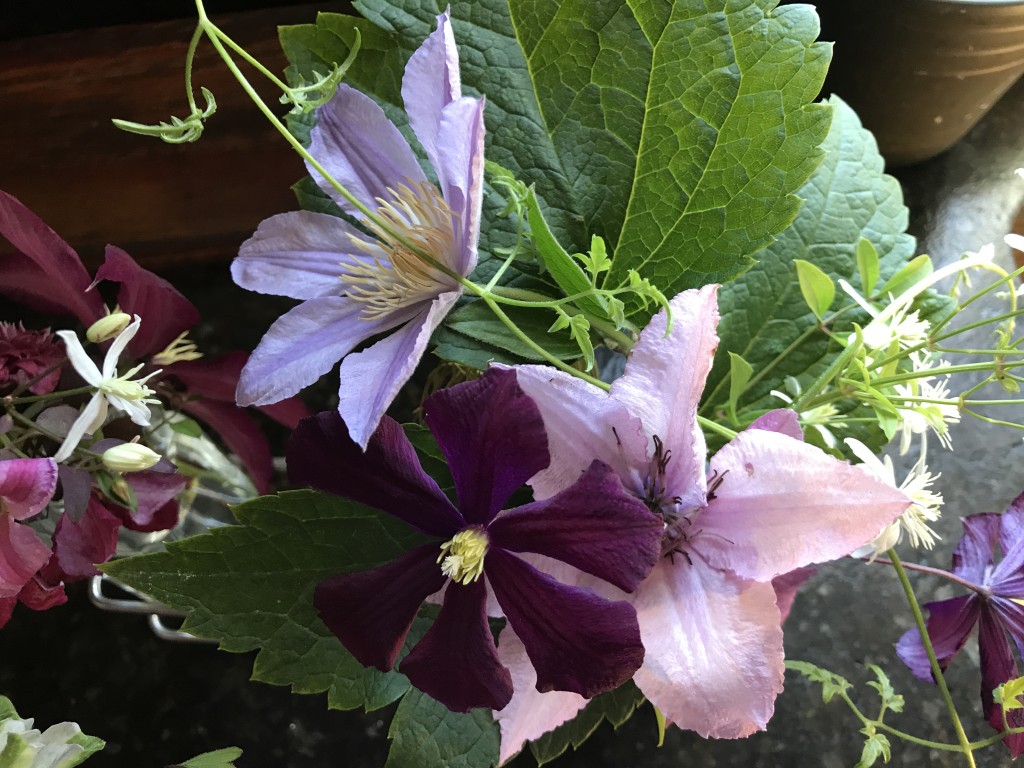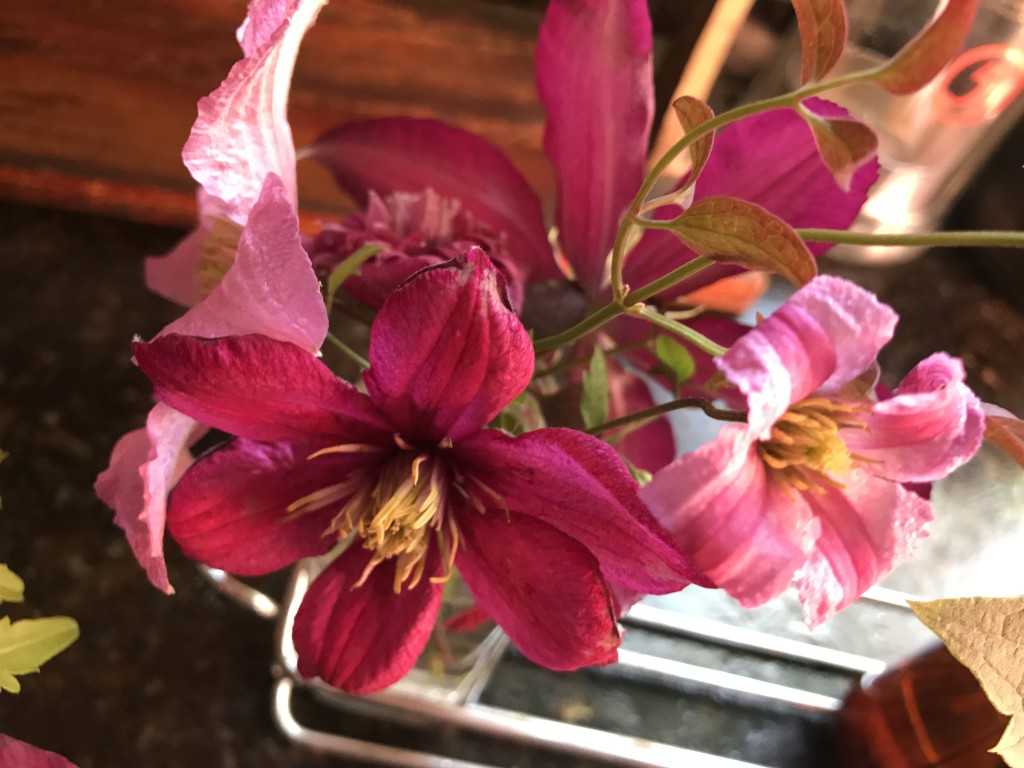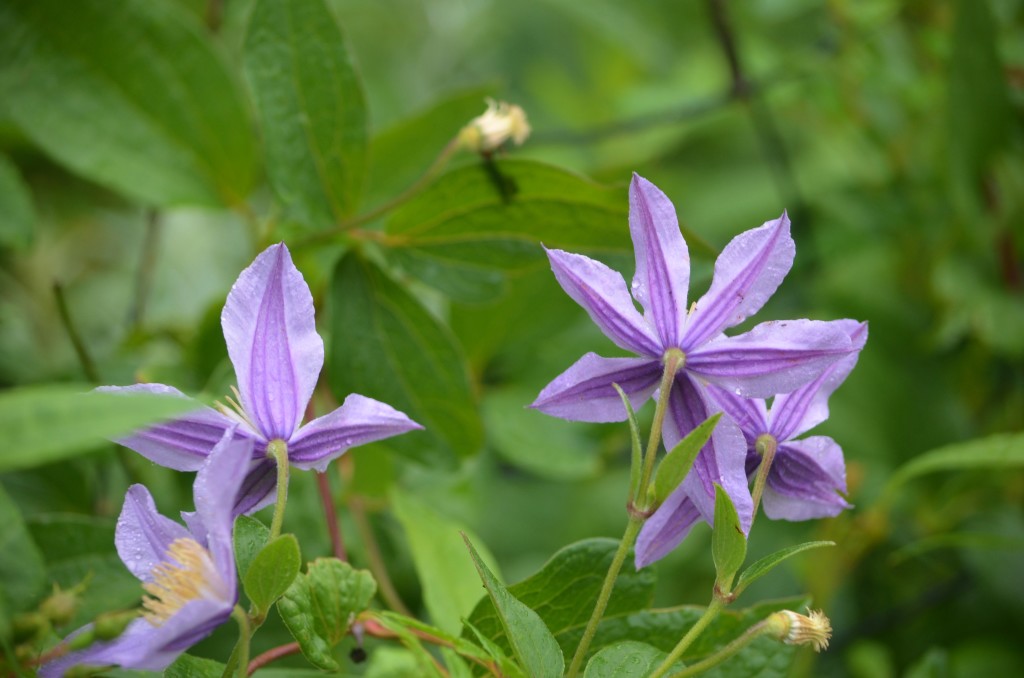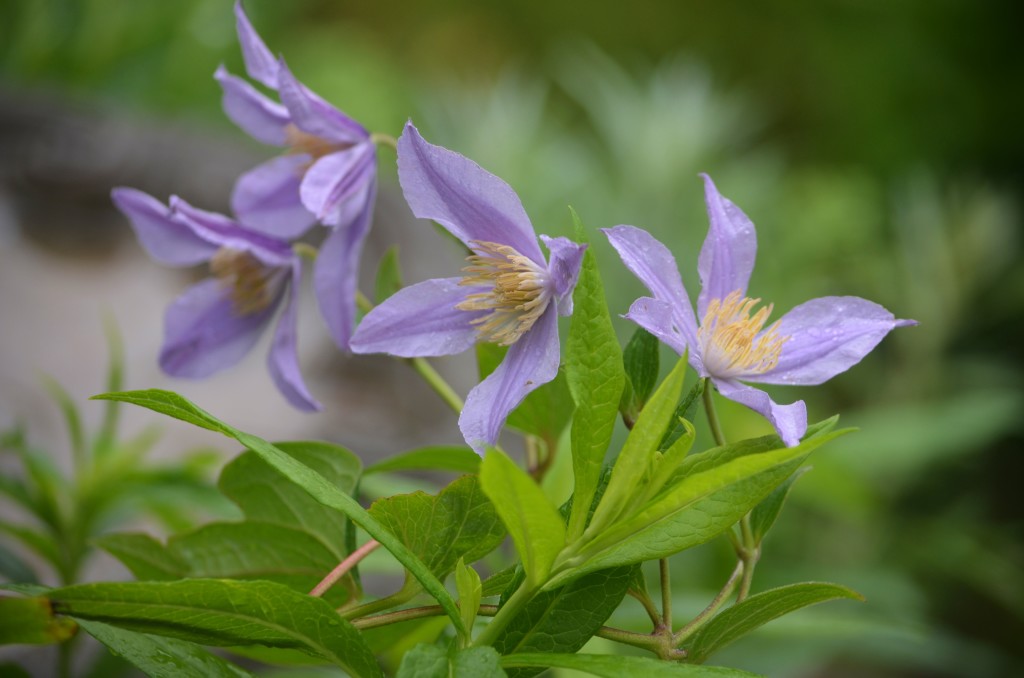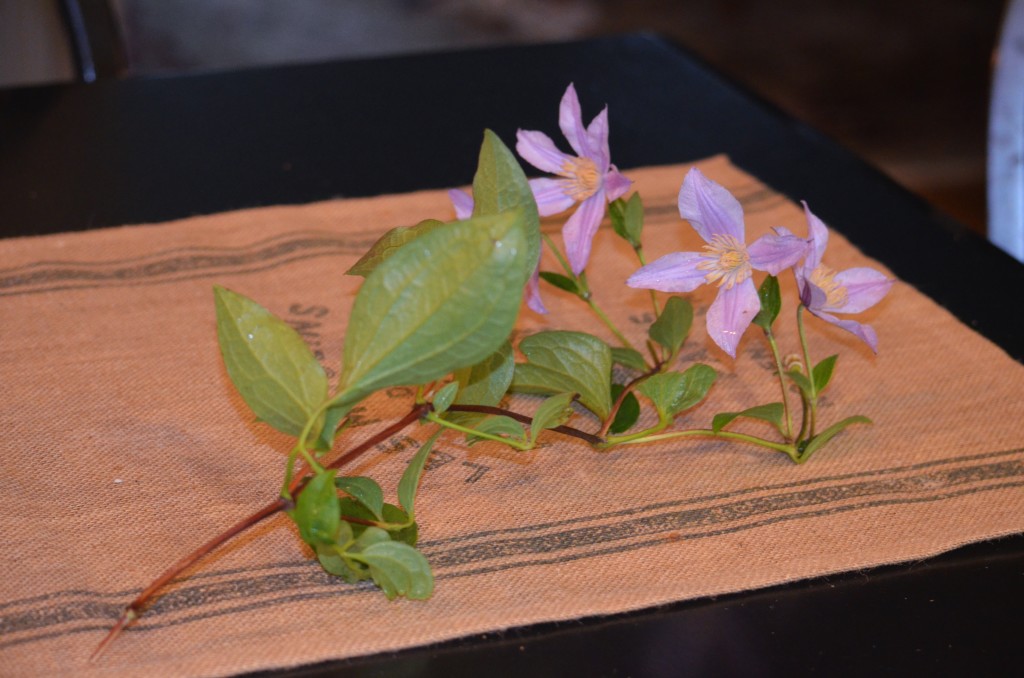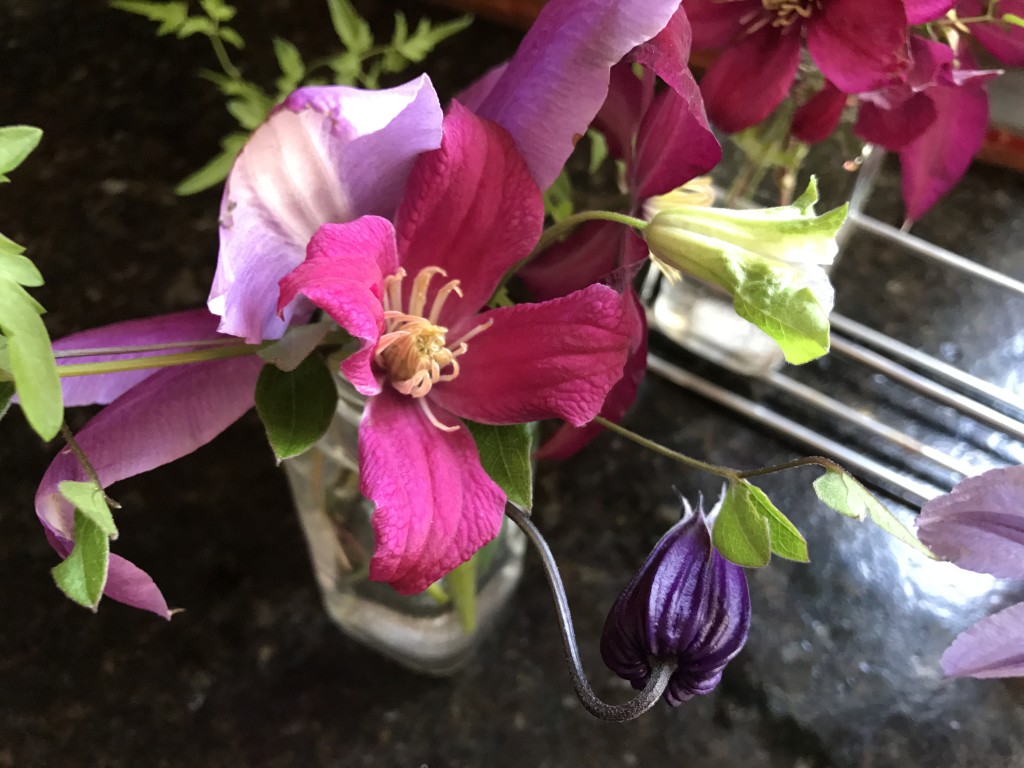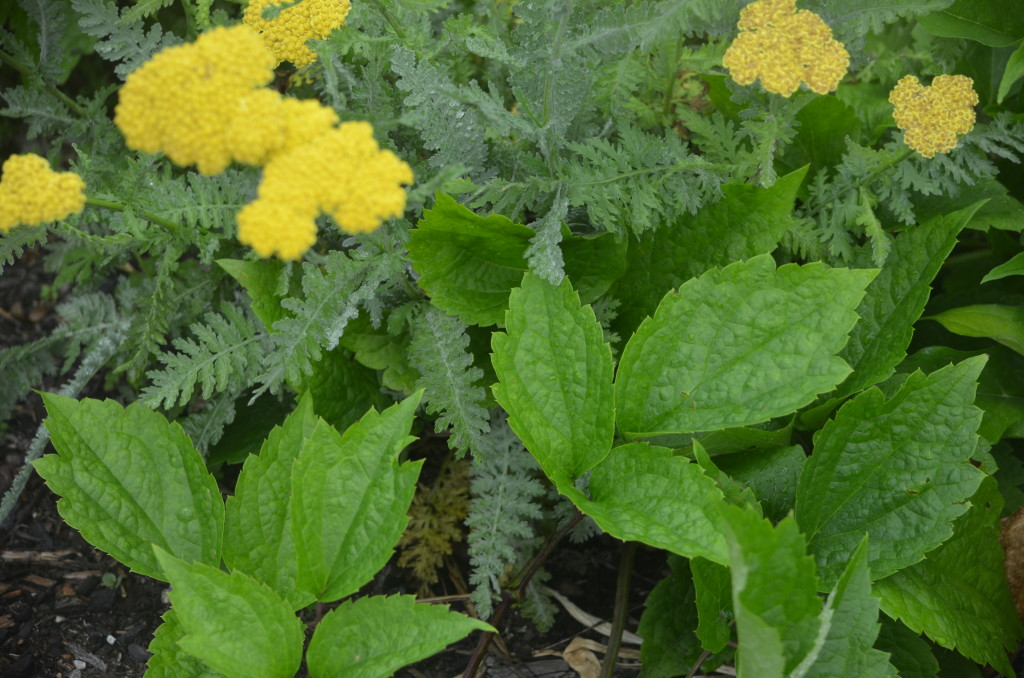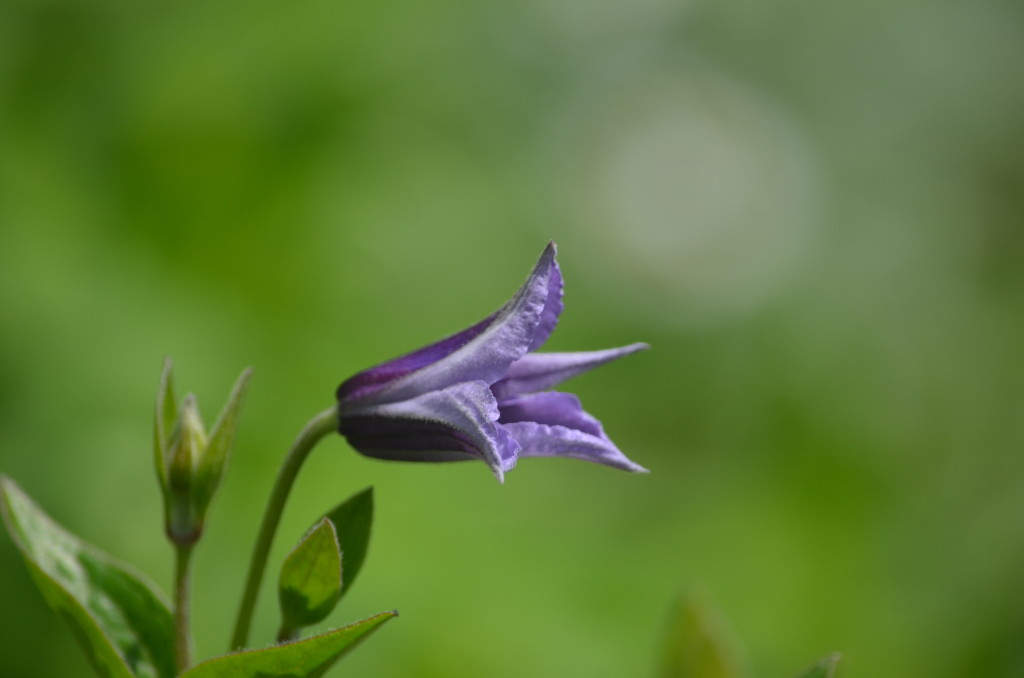 this is a marvelous time for clematis, when the early guys are still trucking along and the late bloomers are just starting, makes for lots of flowers that’s for sure!
this is a marvelous time for clematis, when the early guys are still trucking along and the late bloomers are just starting, makes for lots of flowers that’s for sure!
Elsa Spaeth is a favorite, in my top ten , and blooms start early and carry on for weeks. Only a handful of clemmies get planted more than once here and she is definitly one. The HUGE flowers, that deep color, the vigor of the plant, all combine to make perfection.

elsa spaeth
Betty Corning s another on my top 10 list.I here back from people I have taught telling me how happy they are to have planted her. She is a show stopper because of the sheer volume of flowers at any one time, disease free foliage and 18 + weeks of bloom. Amazing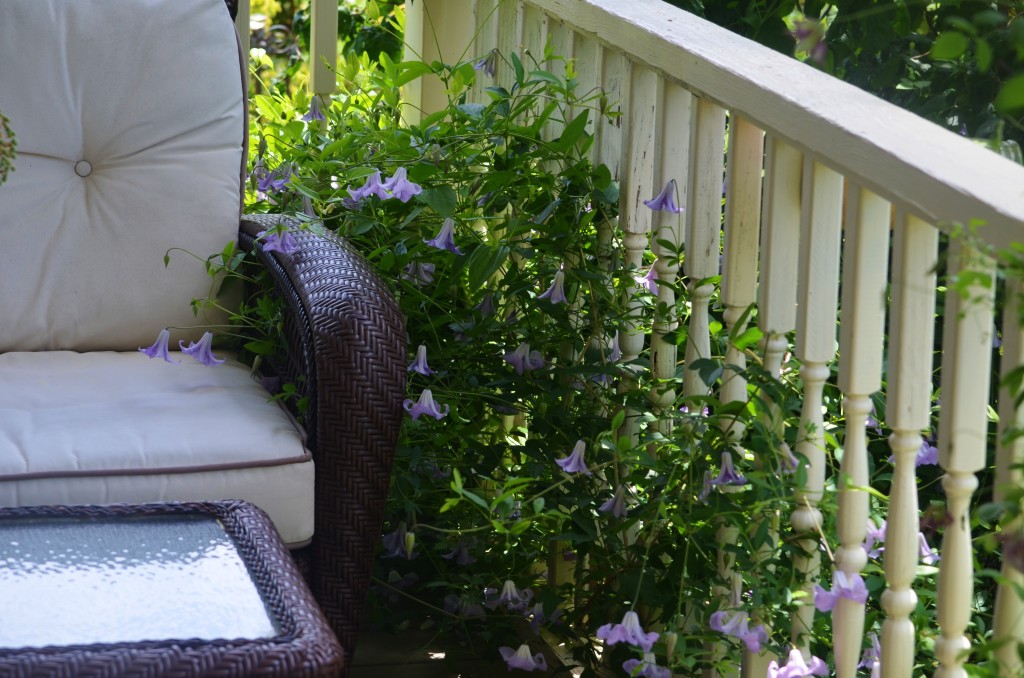

Another vitacella, venosa violacea is just adorable but may get a new home give she is being swamped by other plants where she is
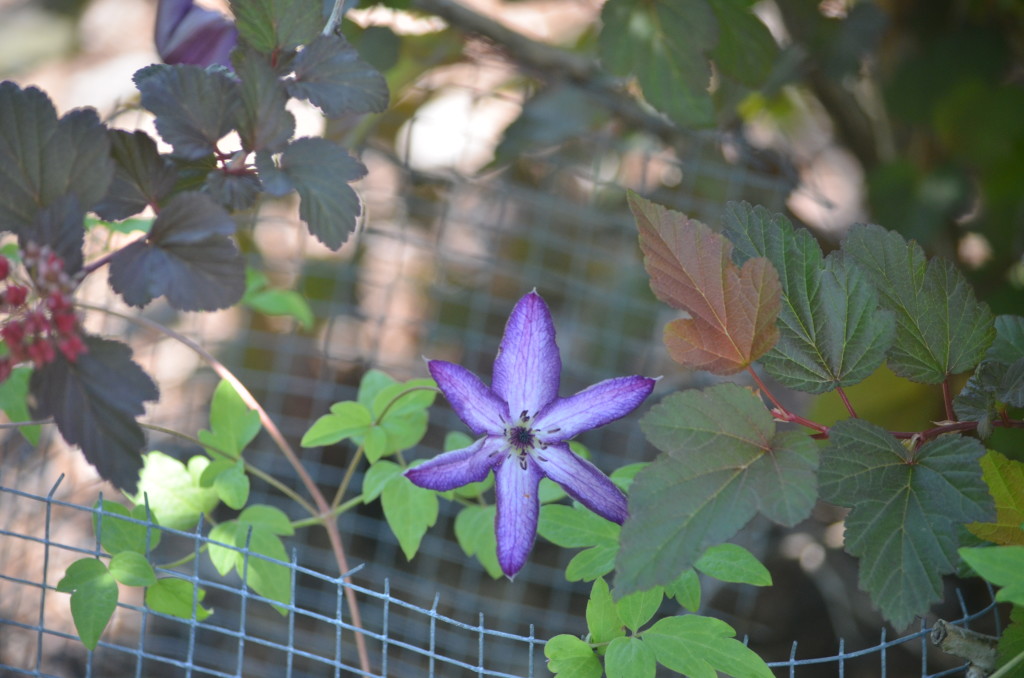 Odoriba is a cross between our natives crispa and viorna. It has cool wide recurving sepals Delicate to look at, easy to grow.
Odoriba is a cross between our natives crispa and viorna. It has cool wide recurving sepals Delicate to look at, easy to grow.
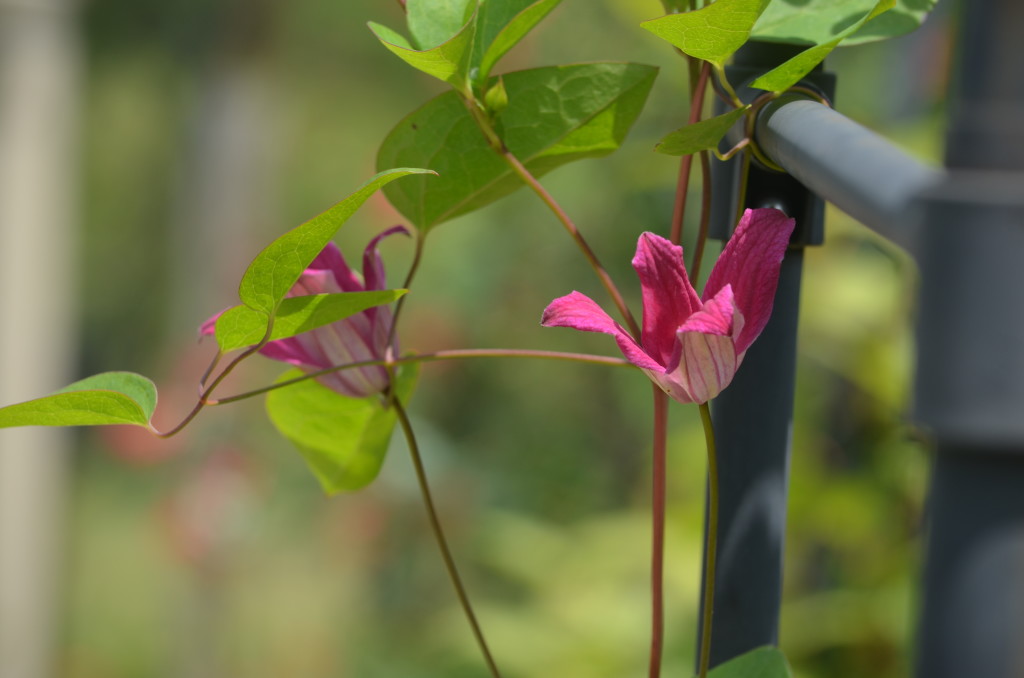
odoriba
Catherine Clanwilliam has sure taken it’s time getting going here but after a few year is showing a little more vigor. It is rosy pink throughout and will twist the tiniest bit after opening

catherine clanwilliam
a tanguitica called ‘Bill McKenzie is currently blooming way above my head in a tree. It is extremely early this year. the seed heads on this one are fantastic

bill mckenzie
purpurea plena elegans is a very diminutive vitacella that really needs to be grown on it’s own to appreciate. It lives here in a large container in the pool area.

pupurea plena elegans
Polish Spirit has the stamina and strength of my people. It blooms so long and so hard and the vines themselves are huge. I grow it here up a covered bench and over a gate into rugosa roses AND over my black fence It is that wonderful!
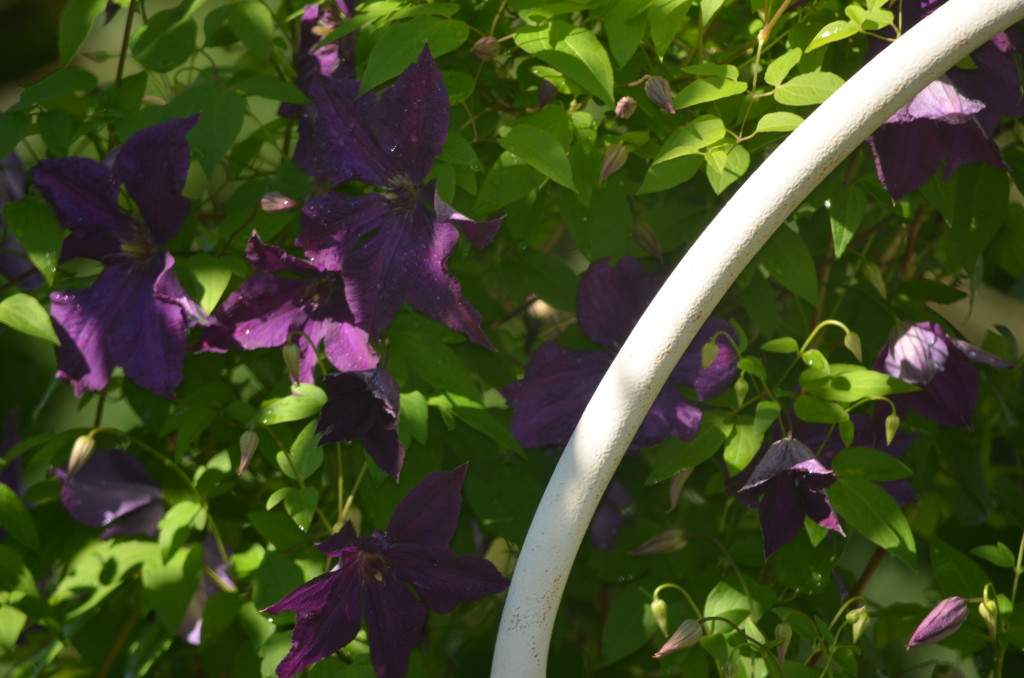
polish spirit
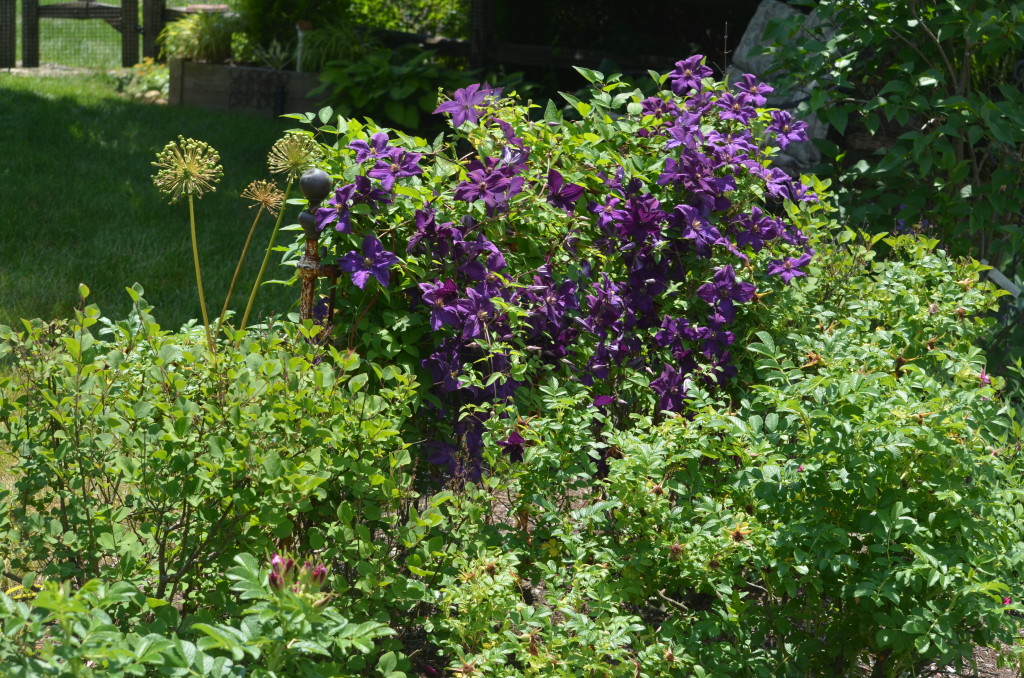

etoille violet is another on my top ten list, it is a flowering machine and can take quite a bit of shade. I grow it into a crabapple tree and up lattice on the north side of the house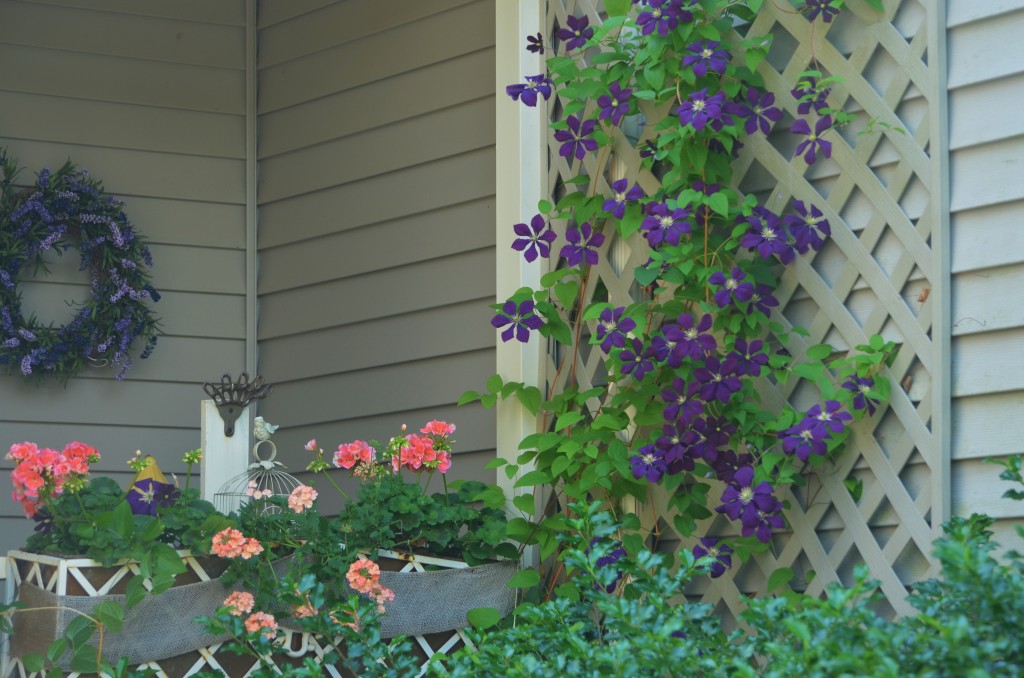

this guy is clematis triternata rubromarginata although it is far more dark purple than my other vine of this variety which is more on the reddish side and it has green in the mid section instead of white.The flowers are very recurved and twisted like a mini-pinwheel. It is very unusual but an up close and personal plant given it’s small and dark flowers which do not stand out from any distance.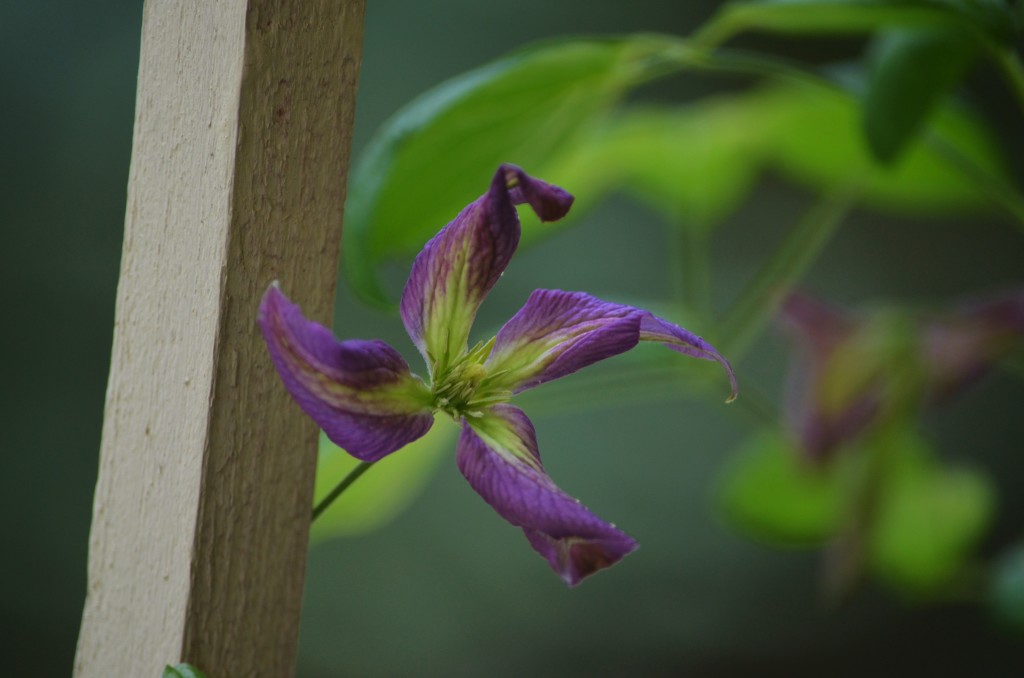

roguchi is a reliable long bloomer that does not twine or climb. It’s buds are just as interesting as the opened flowers which are a very deep dramatic purple. Here it grows in a small raised bed under a maple next to and into a yellow foliaged arborvitae.

rogucci
this one was sold to me as Snow Queen but I am sure it is Hagley Hybrid. It never fades to pale , instead remaining clearly pinky mauve with textured mid-ribs and those dark anthers
speaking of dark anthers, this is Countess of Wessex sporting some very dark anthers indeed
on the arbor with her is Huldine who has been in recovery mode for the last two seasons after consecutive rabbit attacks. The flowers are a little smaller than usual but much better than last years. Both grow into a very rambunctious rambling rose.
flueri is a very compact vine bred by Raymond Evision with very deep dark coloring. This clematis is placed all wrong here, growing under a dark ninebark and barley visible to the world. It is on the to do list to move this next to something variegated and light so it can be seen by all.
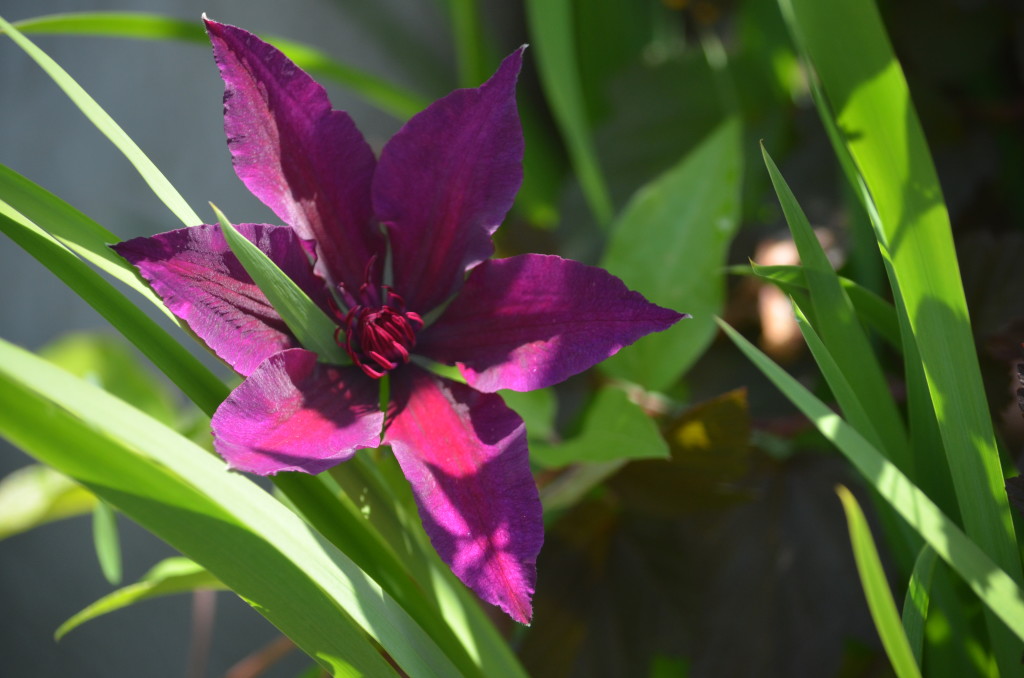
flueri
These buds and the one backward facing bloom below are from Burning Love (or Vitiwester’) which is a lovely deep red and has the added bonus of being crossed with a vitacella parent so it is disease resistant .

burning love
i am Lady Q is ever so dainty and delicate with a crisp white center and purple-pink edges. This weekend the pop up tent we were using for garden check- in on the tour went flying in the wind and took her obelisk down, but she weathered the storm quite well loosing only one of her vines.

I am Lady Q
Normally Dr.Rupell is one of my earliest bloomer, this year it is a bit behind but welcome all the same
Star River has been performing quite nicely for many weeks now. I must say I do not care for the fading flowers on this one so have been regularly deadheading it.

star river
Rosemoor is another dark beauty . Rosemoor used to grow here on a willow tutuer I made but last year I swapped it out for this white one and now she really pops

Comtesse de Bouchard is another on the top ten list, you will never regret growing this a stalwart plant , easy care, generous bloomer, just a delight

comtesse de bouchard
Last but not least are two herbaceous clematis. Arabella has been going strong for 4 weeks , I may start a herbaceous top ten list just so I can add this beauty to it.

a
C. recta is in full bud and ready to become a froth of bloom
and two that are done blooming for now but showing off some funky see heads

freemontii

omishiro
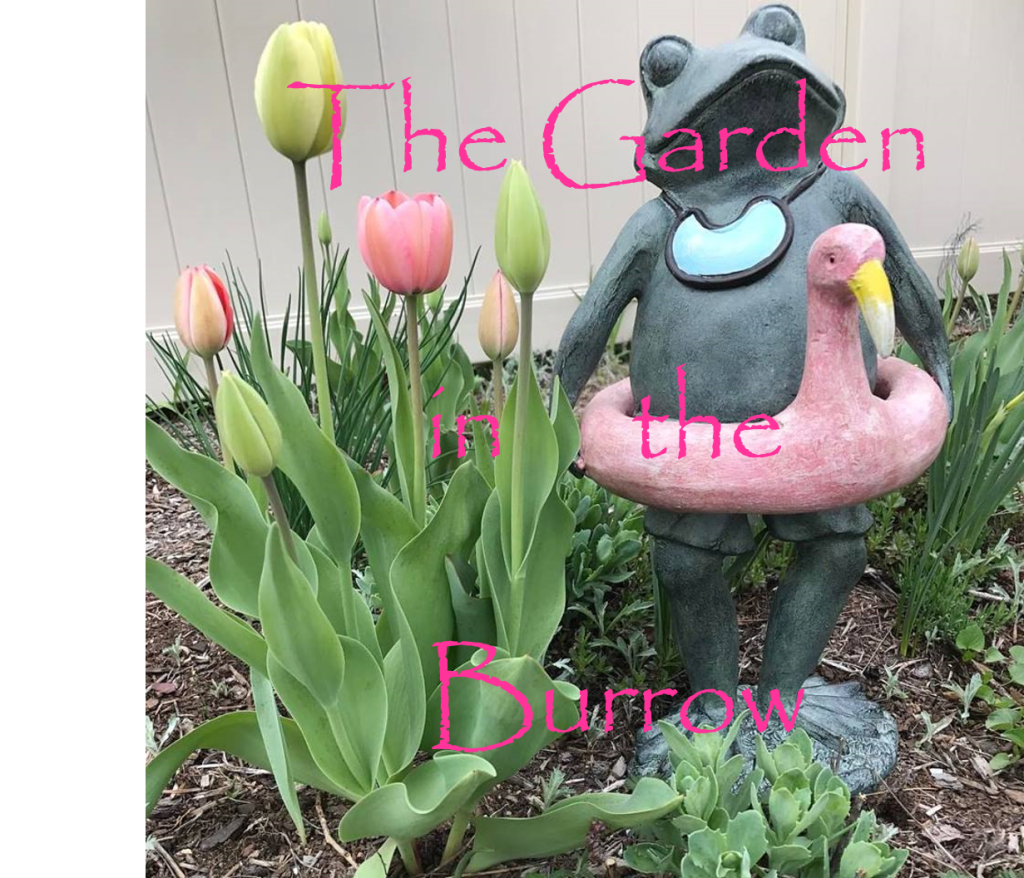 On Friday April 6th from 11-12 I will be running a class at Tower Hill Botanic Garden called
On Friday April 6th from 11-12 I will be running a class at Tower Hill Botanic Garden called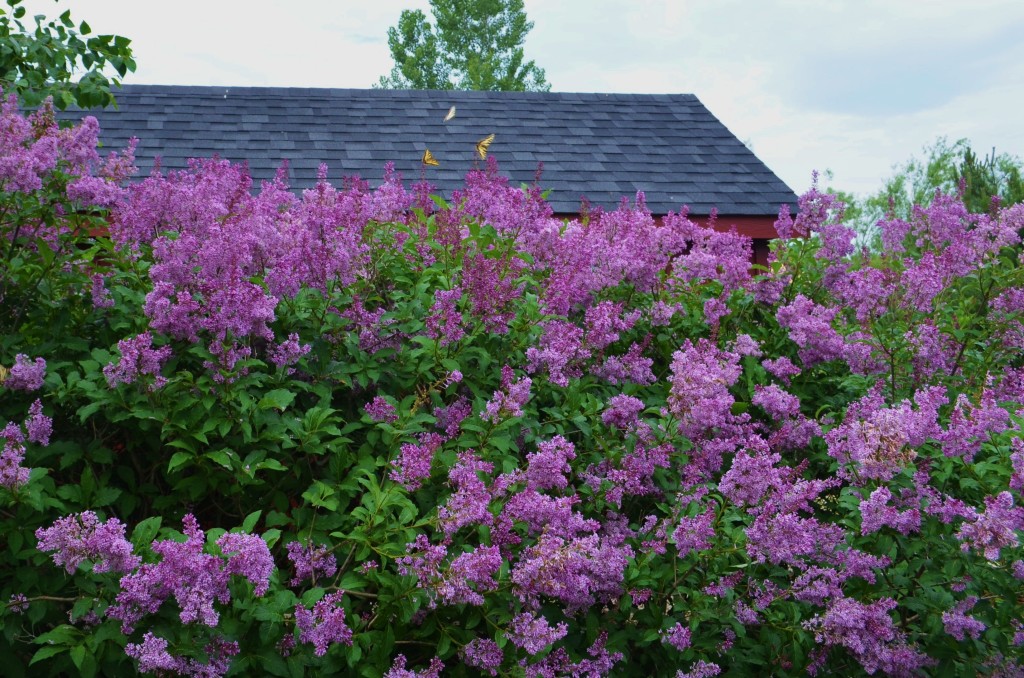


 , but that is easily remedied in a few minutes with some sharp pruners. The only other maintenance is watching for branches that throw out solid green leaves, as with many variegated plants these reversions need to be nipped in the bud so their more vigorous growth won’t out-compete the variegated growth .
, but that is easily remedied in a few minutes with some sharp pruners. The only other maintenance is watching for branches that throw out solid green leaves, as with many variegated plants these reversions need to be nipped in the bud so their more vigorous growth won’t out-compete the variegated growth .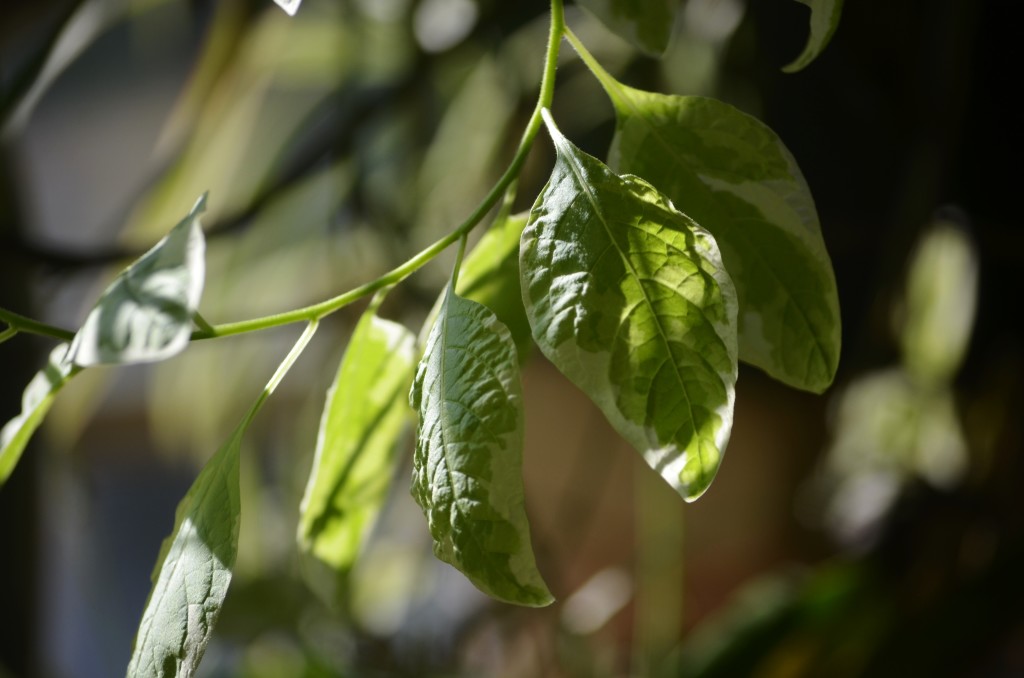
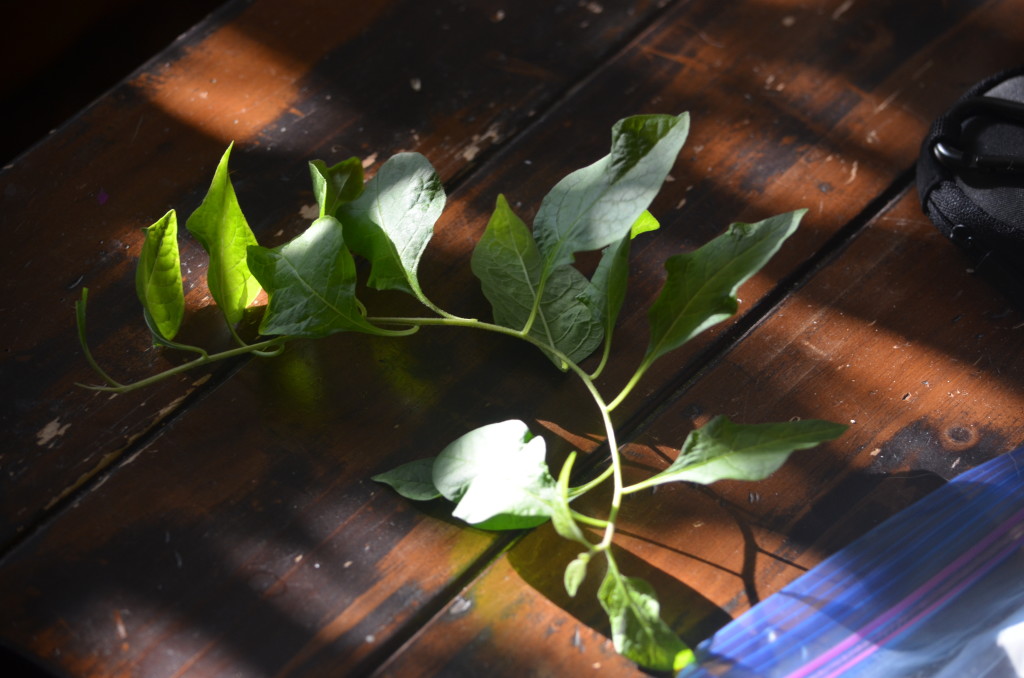


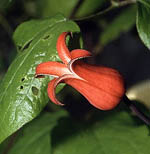 Clematis texensis is a beautiful bright red and has been used in breeding to attain variations of the color . You will not find the straight species anywhere in retail nurseries as it is most difficult to propagate and rare even among collectors. The hybrids of texensis, however, are often found for sale and are bear striking flowers on the reddish pink side . A few well known varieties are
Clematis texensis is a beautiful bright red and has been used in breeding to attain variations of the color . You will not find the straight species anywhere in retail nurseries as it is most difficult to propagate and rare even among collectors. The hybrids of texensis, however, are often found for sale and are bear striking flowers on the reddish pink side . A few well known varieties are
